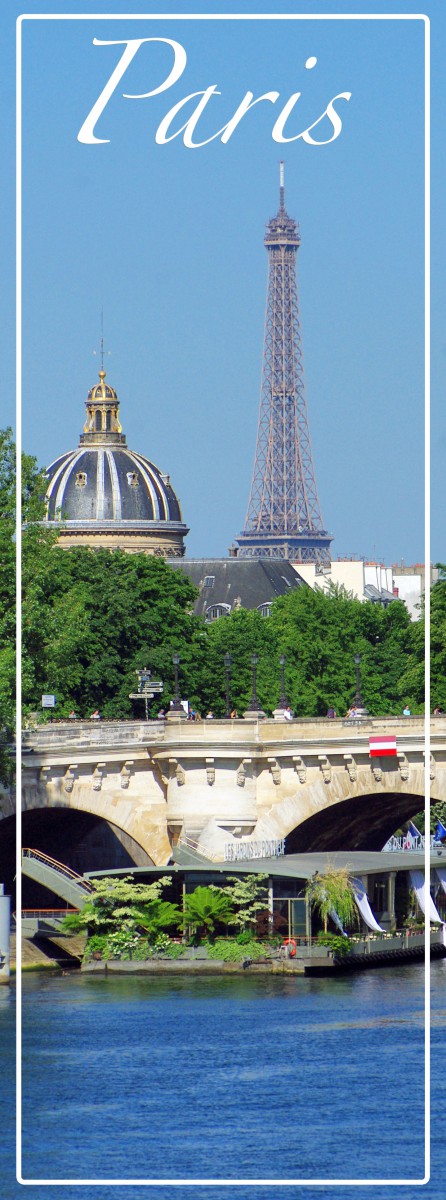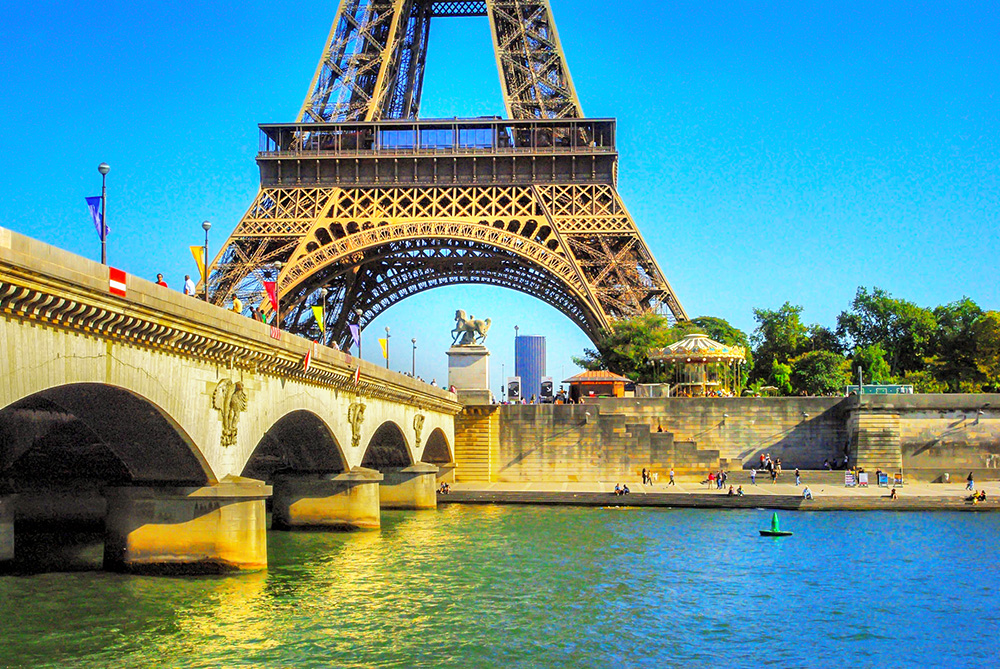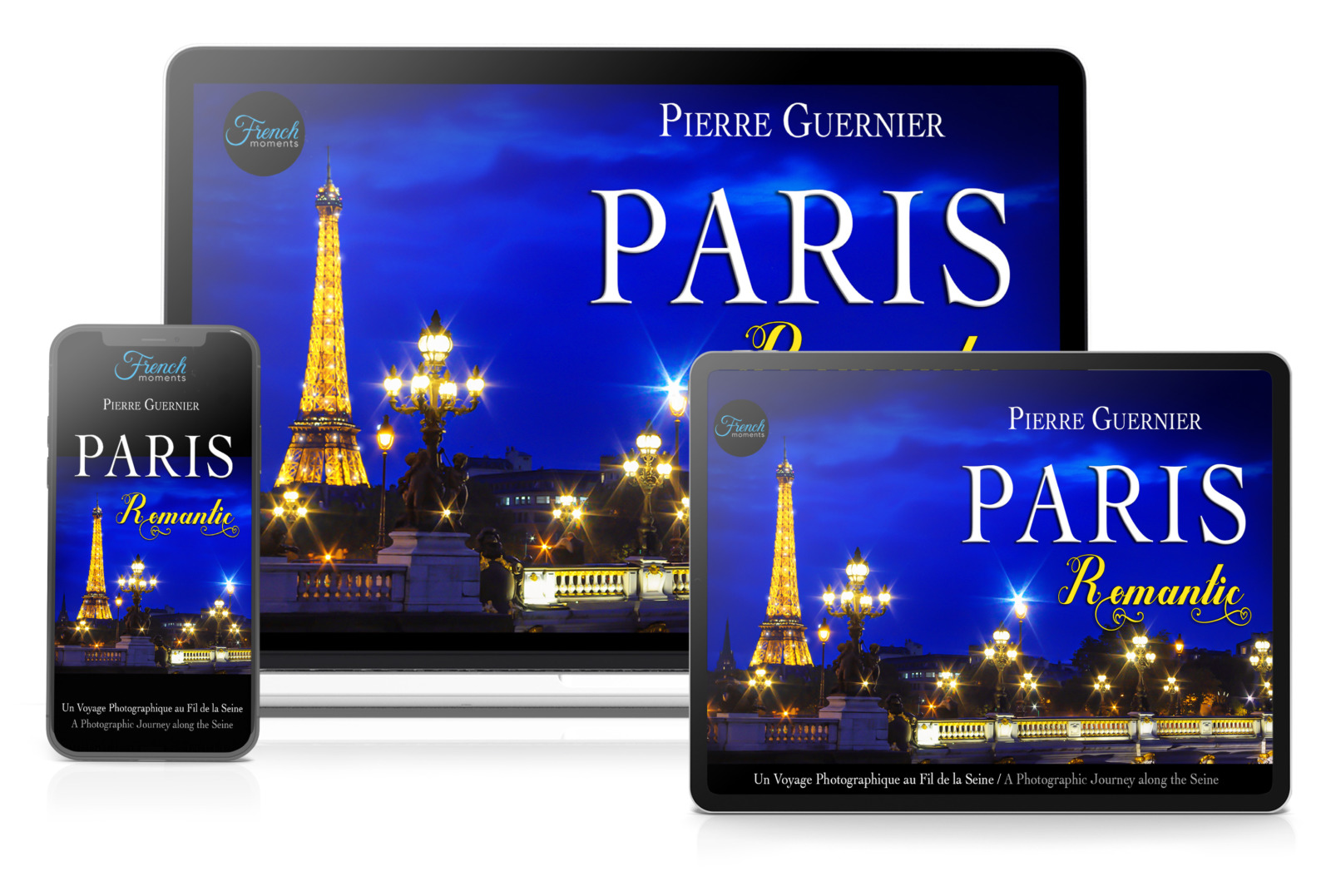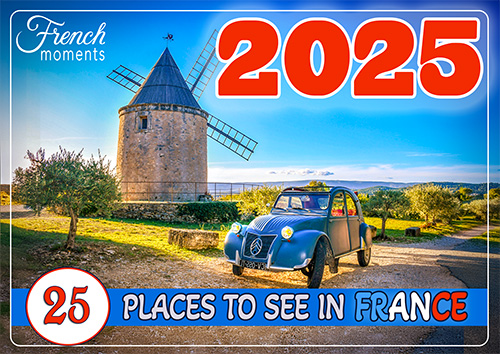The banks of the River Seine (Quais de la Seine) in Paris have been listed by Unesco as a World Heritage Site since 1991. Along the Seine are some of Paris’ most famous monuments and landmarks: the Eiffel Tower, the Louvre, Notre Dame, the Conciergerie, the City Hall, and the Bibliothèque François Mitterrand. Let’s follow the course of the Seine!
The Paris 2024 Olympic opening ceremony promises to be a unique and historic event on Friday, 26 July 2024. The grand celebration will occur outside a stadium for the first time in Olympic history. Instead, the stunning banks of the Seine in Paris will serve as the venue. This innovative choice highlights the beauty of Paris and creates a memorable experience for athletes and spectators alike.
The Quais de la Seine: a bit of history
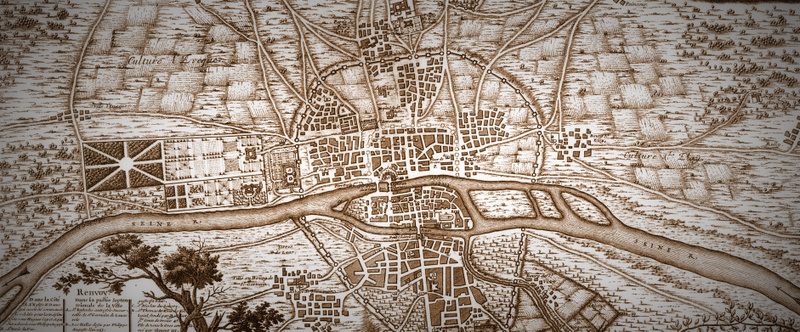
From the 9th to the 19th centuries, bridges were built in Paris, and the city’s banks were established by raising quays and drying the marshlands.
Human development gradually transformed the river’s original appearance. Banks were built up on either side of the river, narrowing it but keeping its significant role as a centre of urban activity.
Water-related activities and houses are concentrated along its banks.

The Seine: a historic part of Paris
The Seine has always played a historic part in the making of Paris.
The waters of the River Seine have always been the heart and soul of Paris, dating back to when the Parisii tribe first established a fishing village along its banks.
The construction of the quays started in 1312 when King Philip IV (the Fair) commissioned the development of today’s Quai des Grands Augustins (Left Bank) in the interest of the river trade. The example was soon followed on the Right Bank with the Quai de la Mégisserie layout and Quai des Célestins.
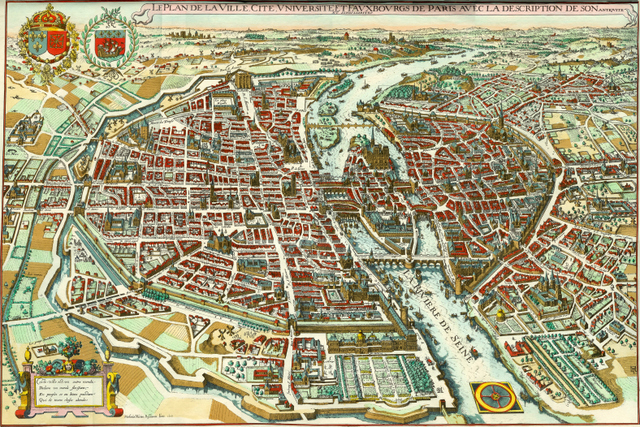
King François I in 1530 and King Henri IV at the beginning of the 17th century connected the discontinued quays by building additional quays.
The first developed quays appeared on the Île de la Cité much later (between 1580 and 1600), as its ports were less important.
The quays of the Seine
In the 19th century, the quays were restructured to feature two levels: the “quais hauts” (high quays) and “berges” (low quays).
In the 1960s, a controversial development of the quays introduced expressways on the low quays in favour of car traffic.
Today, the Paris authorities are inclined to limit car access along the Seine. Significant efforts have been initiated since the 1990s to reclaim the riverbanks for pedestrians.
Romantic Paris: my new eBook is out!
Order your copy now and get inspired by over a hundred beautiful photos!
My new ebook is a collection of 115 photos taken along the banks of the River Seine, with 30 inspiring quotes in English and French.
The Seine in Paris

The River Seine rises at Source-Seine in the Langres Plateau, 30 km northwest of Dijon, Burgundy. 776 km long, it crosses Troyes, Paris, and Rouen before flowing into the English Channel at Le Havre. Over the centuries, the Seine has become an important commercial waterway within the Paris Basin, particularly between Paris and Le Havre.
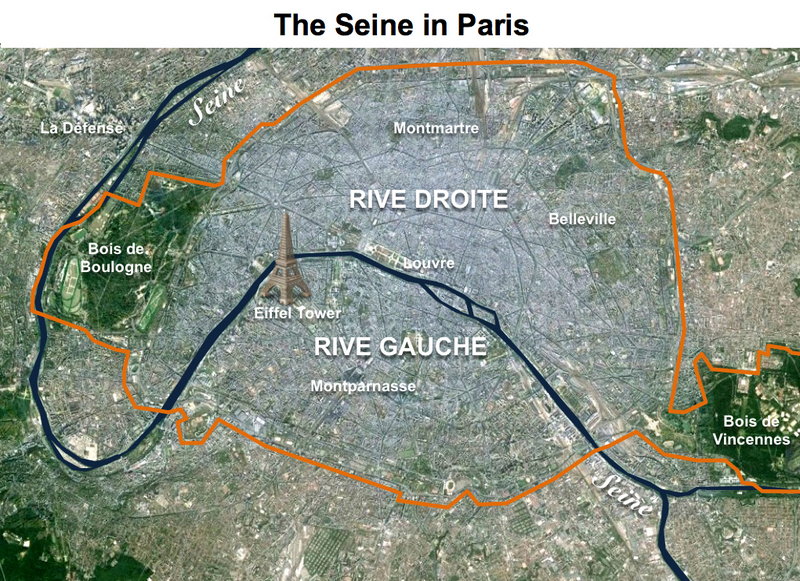
The Seine runs through Paris on a curve over 13 kilometres long, cutting the city into two parts: the Left Bank (rive gauche) and the Right Bank (rive droite). With a depth of 3.40 m and 5.70 m and a width between 30 and 200 m, the river is crossed by 37 bridges, including four footbridges.
The Banks of the Seine in Paris
For nearly 2 km, the river is bordered on both sides by double-decker quays. Lined above by knobbly plane trees and below by cool, green poplars, the quays are wonderful places for walking and picnics. The most impressive part of the banks is found around the two islands of Île de la Cité and Île Saint-Louis.
Île de la Cité
The ship-shaped island is the historical heart of Paris, which was known as Lutetia (Lutèce) during the Roman era. Eight bridges link it to the Right and Left Banks, and a ninth leads to the smaller Île Saint-Louis.

The Île de la Cité includes three major medieval monuments: the Conciergerie, the Gothic Sainte-Chapelle, and the Cathedral of Notre Dame.
Find out more about the Île de la Cité.
Île Saint-Louis
The calm little Île Saint-Louis has nothing in common with its larger neighbour, Île de la Cité.
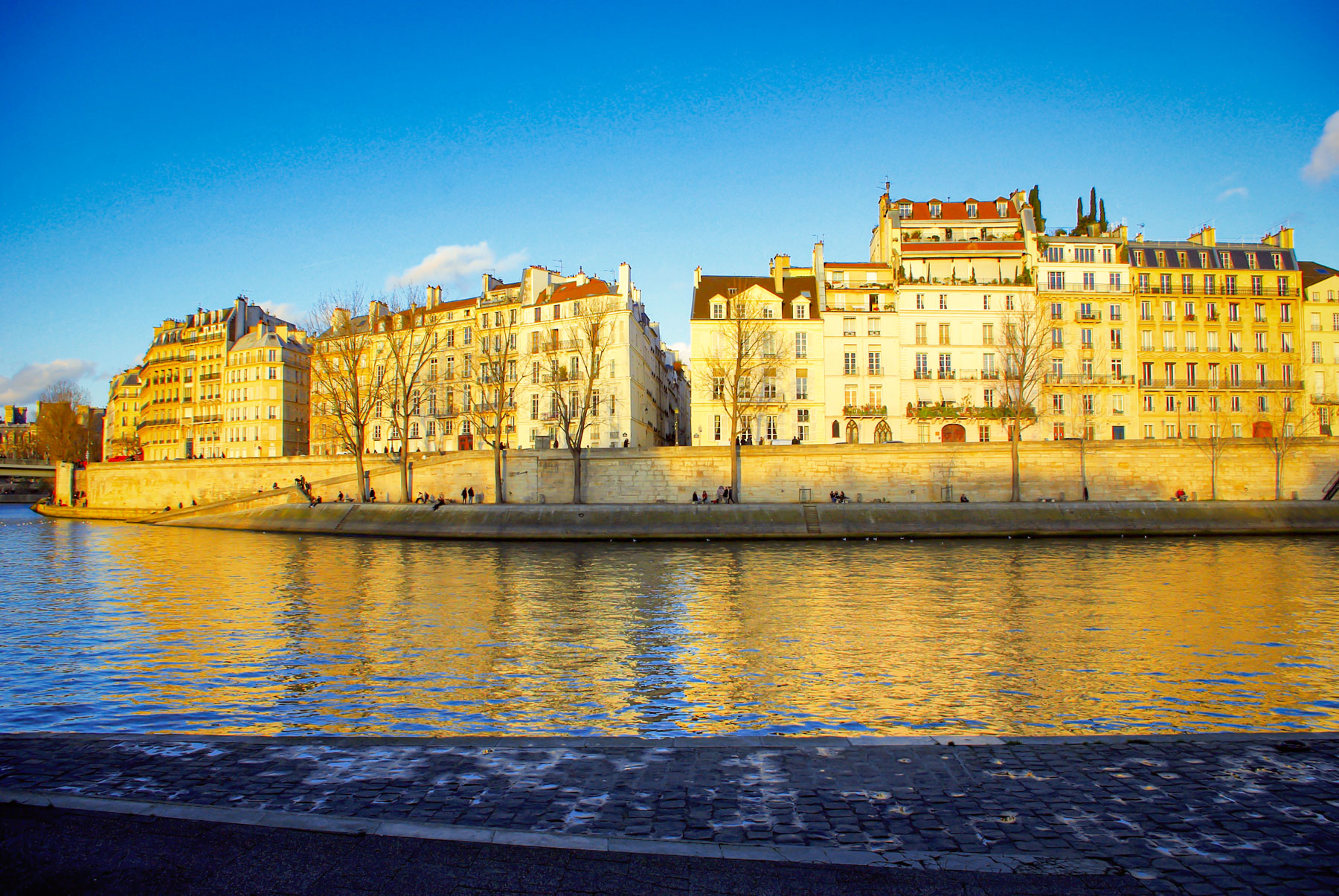
Named after King Louis IX (Saint-Louis), the island includes no great monuments except a few interesting mansions such as Hôtel Lambert. Nevertheless, it is appreciated for its beautiful quays and peaceful residential district in the centre of Paris.
Find out more about Île Saint-Louis.
The Quais de la Seine: a Unesco Site
The Banks of the Seine in Paris became a UNESCO World Heritage Site in 1991. The listed area extends over 365 hectares between Pont de Sully and Pont de Bir-Hakeim, including their surroundings.
The protected zone also covers the islands of Île de la Cité and Île Saint-Louis, and 23 of the 37 bridges across the Seine in Paris. It includes some of Paris’ most famous monuments such as the Eiffel Tower, the Hôtel des Invalides, the Louvre, and Notre-Dame.
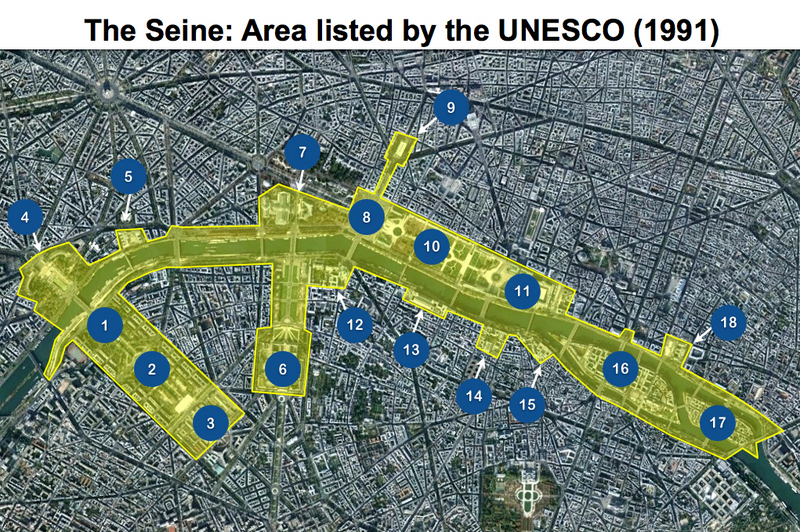
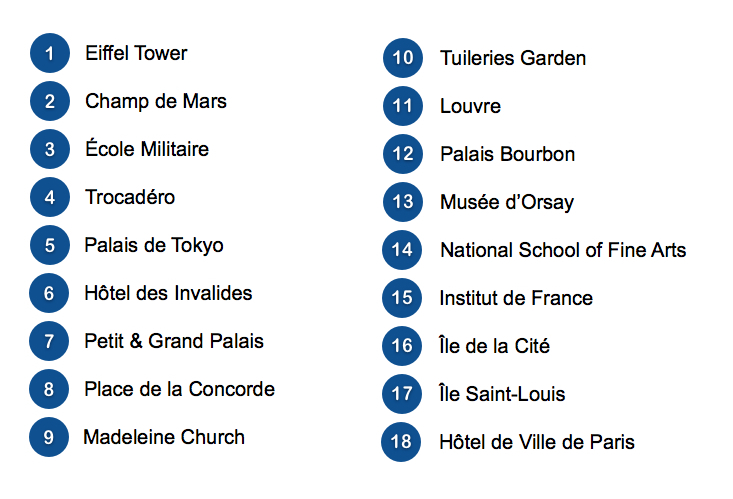
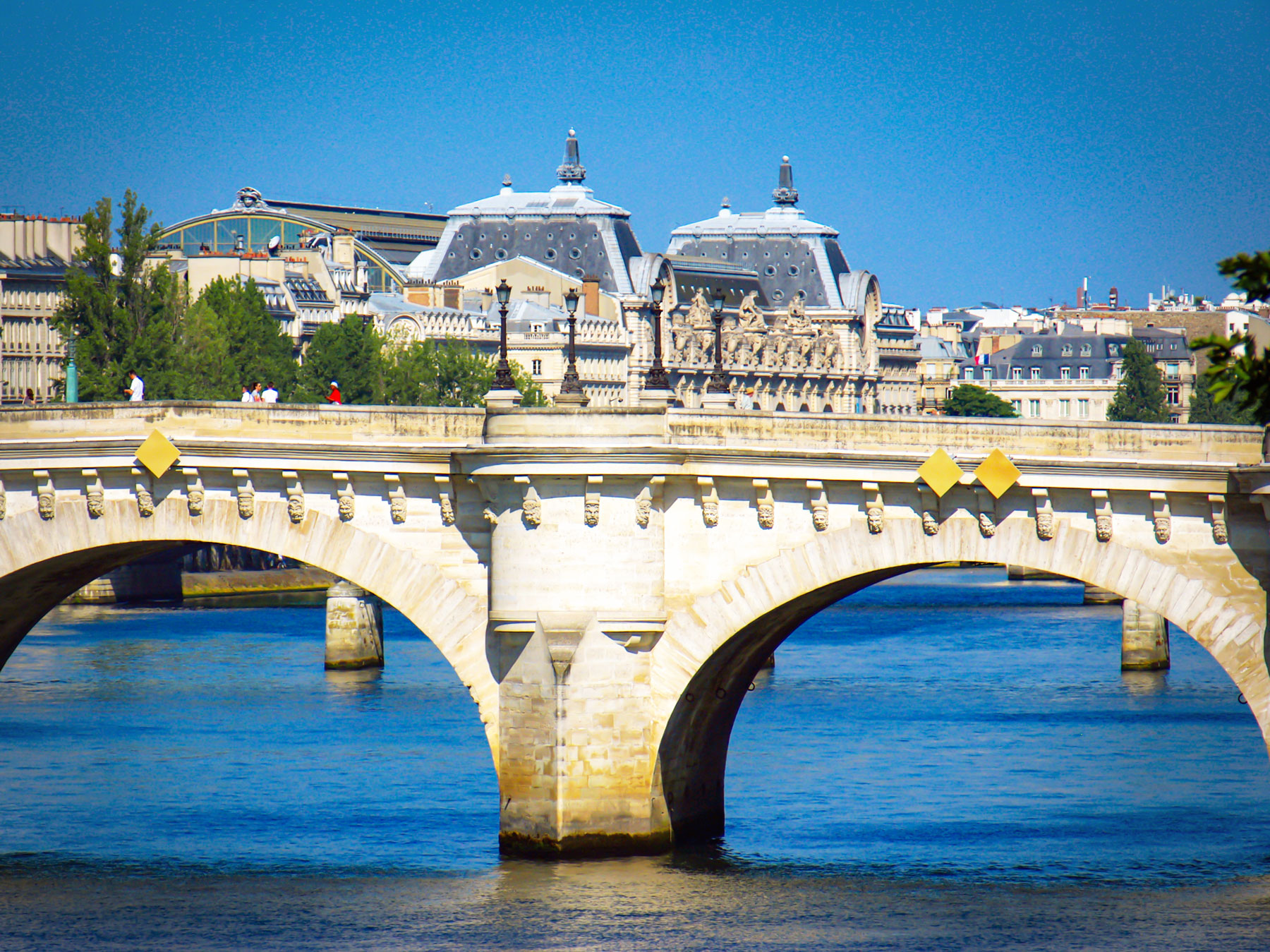
A World Heritage Site
UNESCO justifies the listing by the distinction between two parts of the Seine in Paris, upstream and downstream:
“Upstream, beyond the Arsenal, begins Paris, the port and river transport town; downstream is the royal and subsequently aristocratic Paris, which had only limited commercial activity. It is this latter section of the city that was selected for the World Heritage List. The powerful hand of the state is extremely visible here through its constructions and the legislation in effect.
A geographical and historical entity
It can be seen how the site and the river were gradually brought under control with the articulation of the two islets, Île de la Cité and Île Saint-Louis, with the bank, the creation of north-south thoroughfares, installations along the river course, construction of quays, and the channelling of the river.
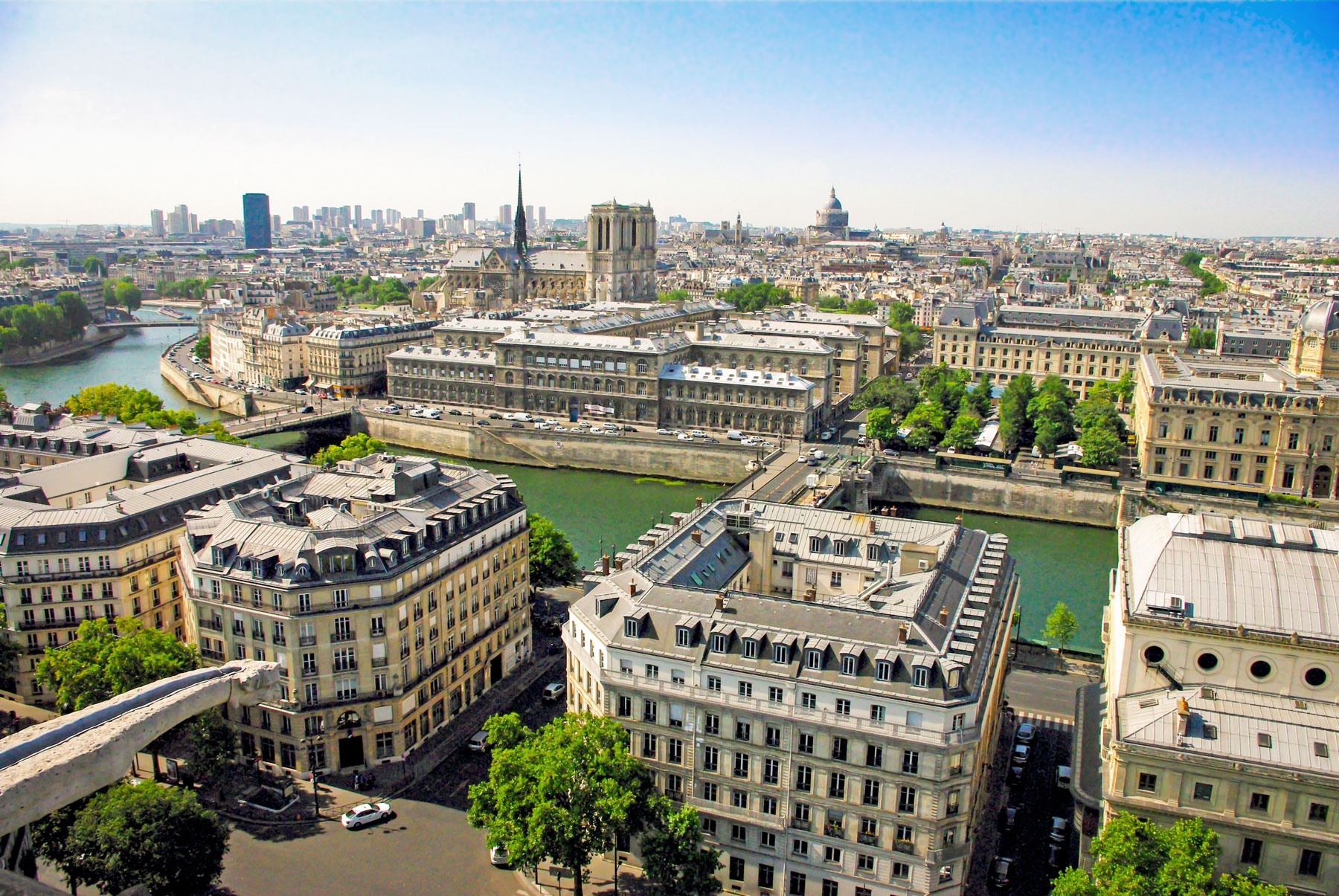
Similarly, although the successive walls of the city have disappeared (the ramparts of Philip-Augustus, Charles V, and the Fermiers Généraux), their traces may be read in the difference in size and spacing of the buildings (closer together in the Marais and the Île Saint-Louis, more open after the Louvre, beyond which are a greater number of major classic constructions laid along three perpendicular axes:
- Palais Bourbon-Concorde-Madeleine,
- Invalides-Grand and Petit Palais,
- Champ-de-Mars-École Militaire-Palais de Chaillot.
The ensemble must be regarded as a geographical and historical entity. Today, it constitutes a remarkable example of urban riverside architecture, where the strata of history are harmoniously superposed.”
(source: http://whc.unesco.org/en/list/600/)
Book a cruise to see the most beautiful bridges of Paris!

Fancy discovering the bridges from the river once the pandemic’s over? Book one of the following cruises with our partner, Tiqets.
Choose from a daytime promenade to a dinner cruise!
- Seine River Cruise by Bateaux Mouches
- Batobus – Riverboat Shuttle Service
- Champagne Cruise on the Seine
- Lunch Cruise on the Seine
- Gourmet Dinner Cruise on the Seine
- Dinner Cruise on the Seine
The bridges of Paris
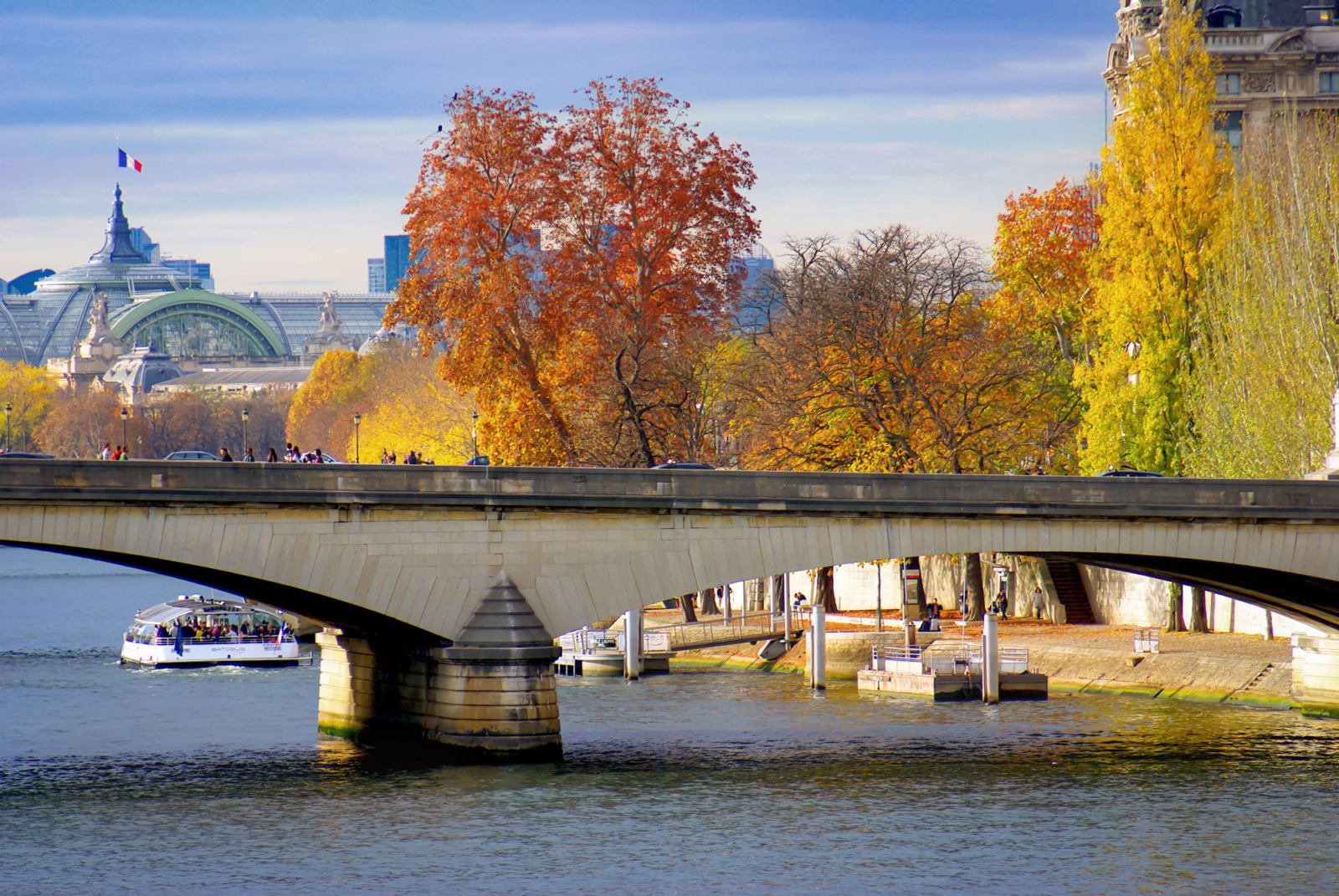
No less than 37 bridges span the Seine in Paris. Five are pedestrianised, and two are rail bridges (métro and RER).
Eight bridges connect the Left and Right Banks of Paris to Île de la Cité and four to Île Saint-Louis. One bridge (Pont Saint Louis) connects the two islands.
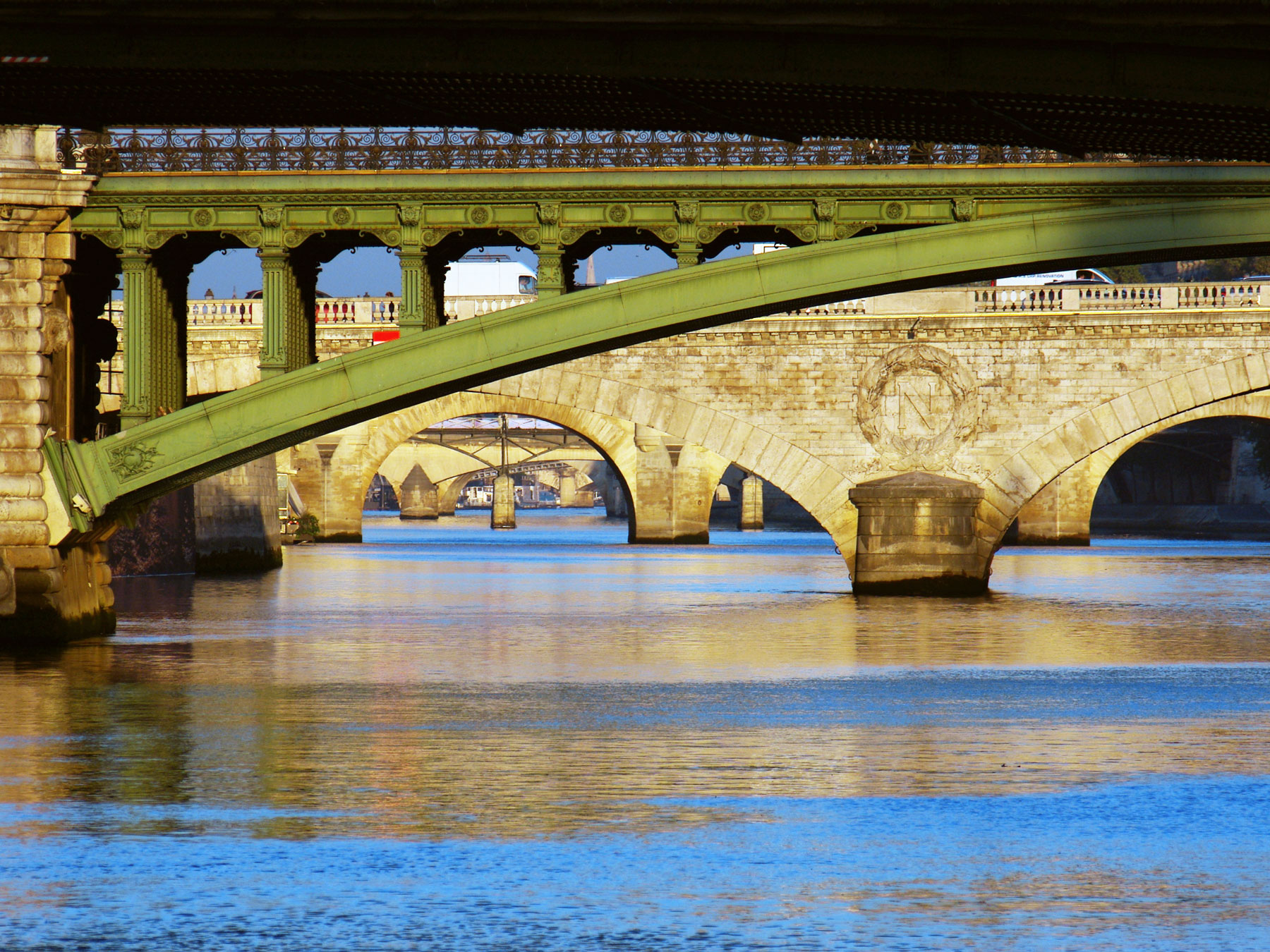
The list of the bridges in Paris
The list below takes an inventory of all the bridges from upstream to downstream of Paris with the year of construction and/or re-construction:
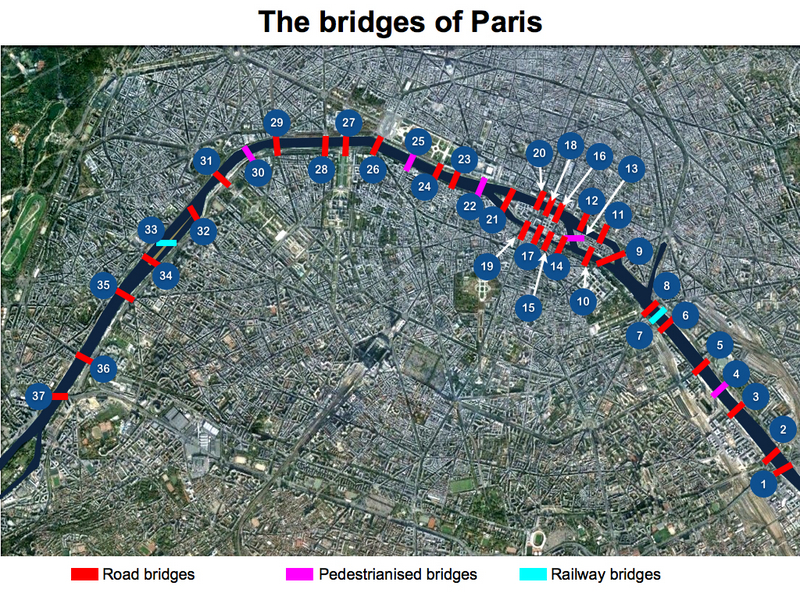
Bridges from Boulevard Périphérique (East) to Ile Saint-Louis | ||
| 1 | Pont amont (part of the Boulevard Périphérique) | 1969 |
| 2 | Pont National | 1853 |
| 3 | Pont de Tolbiac | 1882 |
| 4 | Passerelle Simone-de-Beauvoir (pedestrianised) | 2006 |
| 5 | Pont de Bercy (for road traffic and another level for the line 6 of the métro | 1991 |
| 6 | Pont Charles-de-Gaulle | 1864 and 1998 |
| 7 | Viaduc d’Austerlitz (for the line 5 of the métro) | 1904 |
| 8 | Pont d’Austerlitz | 1807 |
Bridges of Ile Saint-Louis and Ile de la Cité | ||
| 9 | Pont de Sully (crosses the eastern tip of Île Saint-Louis) | 1638 and 1877 |
| 10 | Pont de la Tournelle (from the Left Bank to Île Saint-Louis) | 17th c and 1930 |
| 11 | Pont Marie (from Île Saint-Louis to the Right Bank, historic monument) | 1635 |
| 12 | Pont Louis-Philippe (from Île Saint-Louis to the Right Bank) | 1834 and 1862 |
| 13 | Pont Saint-Louis (pedestrianised, from Île Saint-Louis to Île de la Cité) | 1634 and 1970 |
| 14 | Pont de l’Archevêché (from the Left Bank to Île de la Cité) | 1828 |
| 15 | Pont au Double (from the Left Bank to Île de la Cité) | 1626 |
| 16 | Pont d’Arcole (from Île de la Cité to the Right Bank) | 1828 and 856 |
| 17 | Petit Pont (from the Left Bank to Île de la Cité) | 1st C BC and 1853 |
| 18 | Pont Notre-Dame (from Île de la Cité to the Right Bank) | Roman era and 1914 |
| 19 | Pont Saint-Michel (from the Left Bank to Île de la Cité) | 1378 and 1857 |
| 20 | Pont au Change (from Île de la Cité to the Right Bank) | 9th century and 1860 |
| 21 | Pont Neuf (crossing the west tip of Île de la Cité, historic monument) | 1607 |
Bridges from Ile de la Cité to Boulevard Périphérique (West) | ||
| 22 | Pont des Arts (pedestrianised, historic monument) | 1804 and 1984 |
| 23 | Pont du Carrousel | 1834 and 1939 |
| 24 | Pont Royal (historic monument) | 1550 and 1689 |
| 25 | Passerelle Léopold-Sédar-Senghor (formerly known as Passerelle de Solférino until 2006) | 1869 and 1999 |
| 26 | Pont de la Concorde (historic monument) | 1791 |
| 27 | Pont Alexandre III (historic monument) | 1900 |
| 28 | Pont des Invalides | 1829 and 1856 |
| 29 | Pont de l’Alma | 1856 and 1974 |
| 30 | Passerelle Debilly (pedestrianised, historic monument) | 1900 |
| 31 | Pont d’Iéna (historic monument) | 1814 and 1935 |
| 32 | Pont de Bir-Hakeim (for road traffic and another level for the line 6 of the métro, historic monument) | 1878 and 1905 |
| 33 | Pont Rouelle (crossing Île aux Cygnes, RER C viaduct) | 1900 |
| 34 | Pont de Grenelle (crossing Île aux Cygnes) | 1827 |
| 35 | Pont Mirabeau (historic monument) | 1897 |
| 36 | Pont du Garigliano | 1966 |
| 37 | Pont aval (part of the Boulevard Périphérique) | 1968 |
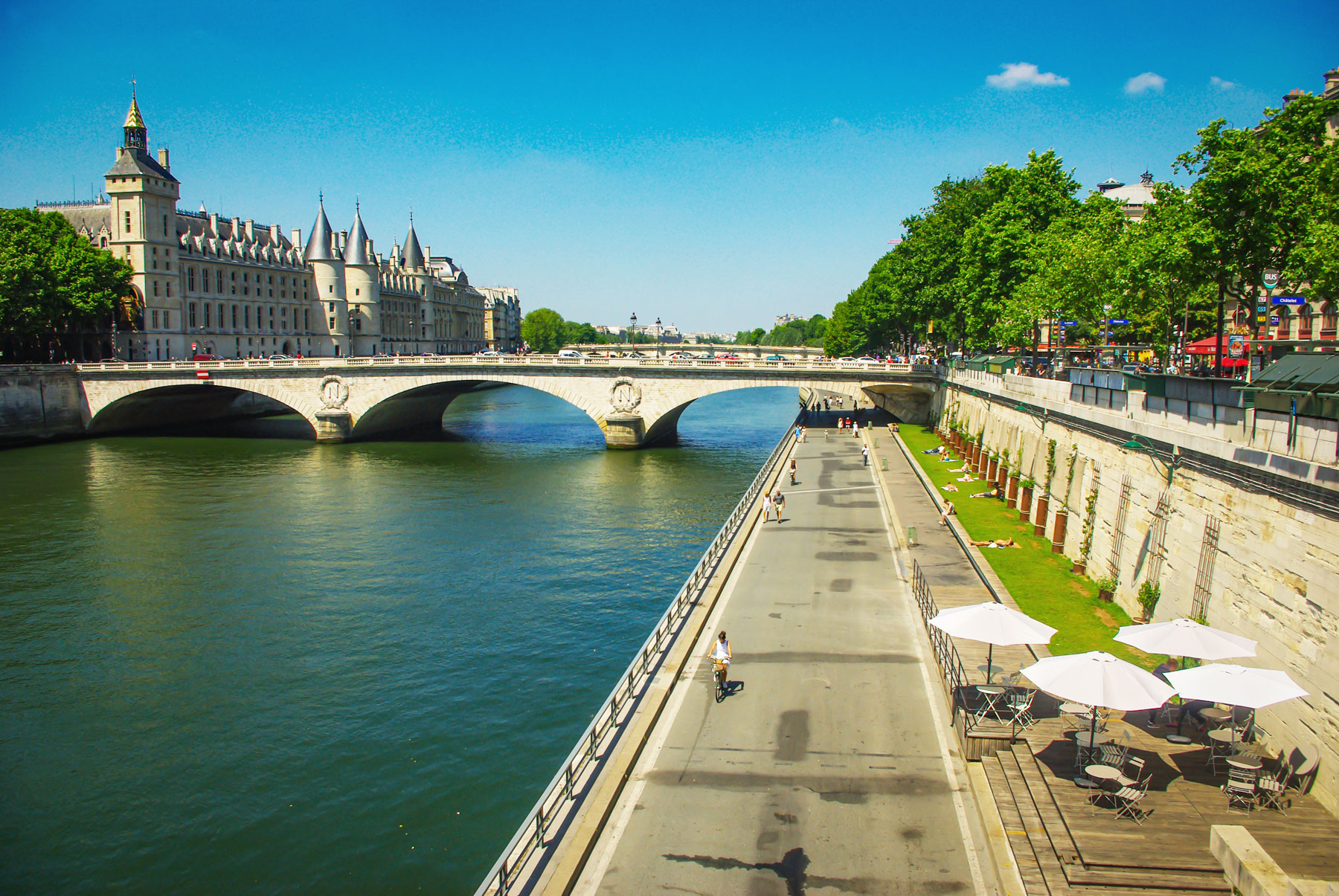
The Bouquinistes of Paris
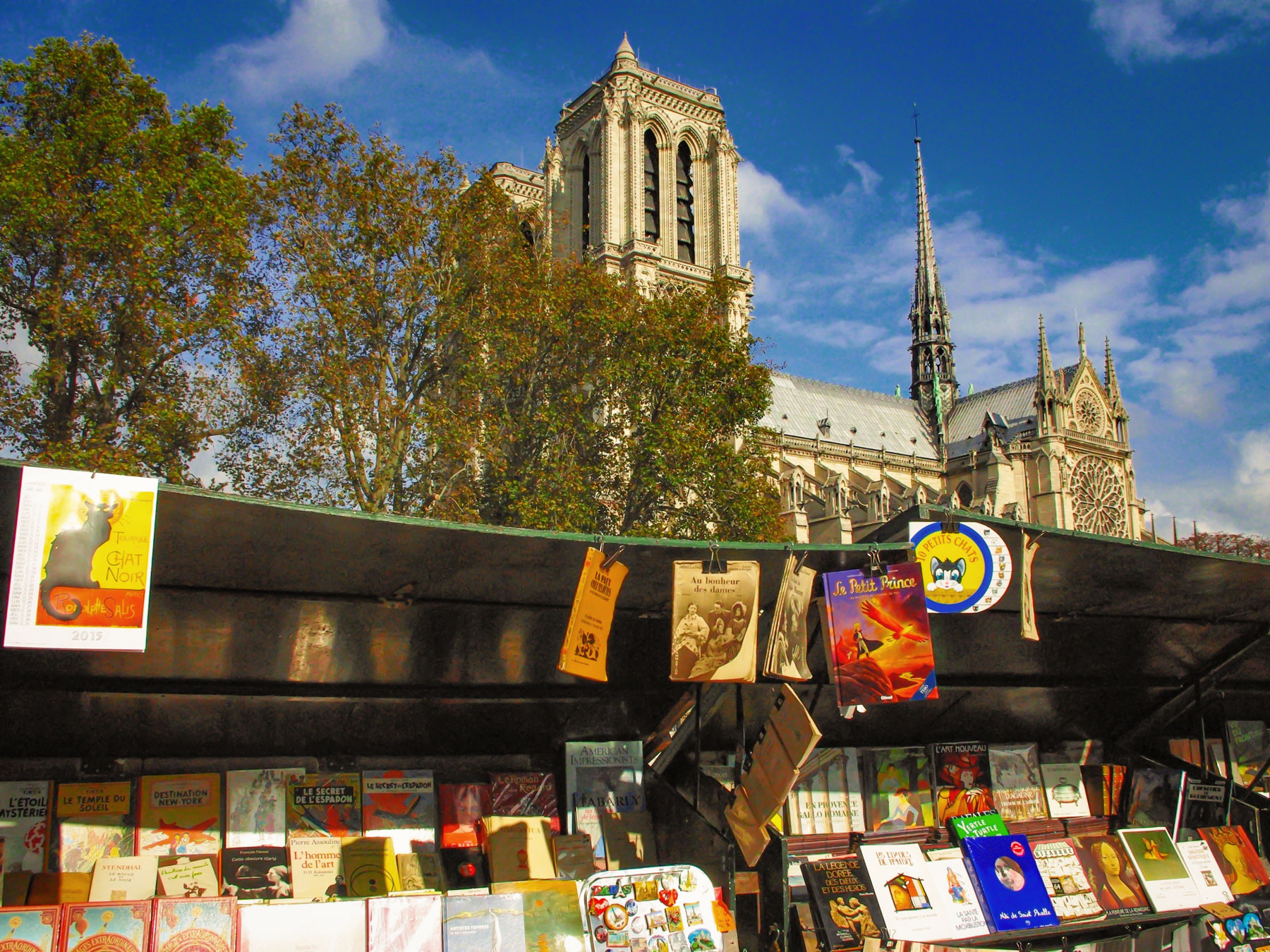
The banks of the Seine would not be the same without the established “bouquinistes”. The booksellers and their green painted boxes have truly become one of the many iconic symbols of Paris.
It was once said that the Seine is the only river in the world that runs between two bookshelves!
Always in the open air during any weather :
“by the wind, the rain, the frost, the snow, the fog, and the great sun, that they end by looking much like the old statues of cathedrals”
(Anatole France, The Crime of Sylvestre Bonnard).
Find out more about the Bouquinistes of Paris.
Paris 2024: A Spectacular Event on the Quais de la Seine
Paris will host a unique Olympic opening ceremony on Friday, 26 July 2024.
For the first time, this grand event will not be held in a stadium but on the iconic Seine River, right in the city’s heart.
This decision showcases Paris’s stunning beauty and creates a magical experience for both athletes and spectators.
A Historic Parade on the Seine
As a tradition, the ceremony will feature 205 delegations worldwide, starting with Greece.
This spectacular event will span six kilometres, from Pont d’Austerlitz to the Trocadéro.
It’s expected to draw over a billion viewers globally, with 326,000 people watching from the banks of the Seine.
Athletes will parade on boats along the 6 km route.
The parade will start at Pont d’Austerlitz, pass between the Île Saint-Louis and Île de la Cité, and go under several beautiful bridges.
The final destination is the Trocadéro, with the Eiffel Tower providing a stunning backdrop.
This unique setting promises an unforgettable experience.
Artistic Brilliance and Cultural Showcase
The ceremony will feature twelve artistic scenes highlighting French heritage, directed by Thomas Jolly.
Over 3,000 dancers and actors will perform on the banks and bridges of the Seine, turning Paris into a living stage.
These scenes will celebrate France’s rich culture and history and showcase famous monuments and landmarks.
The setting sun’s natural light will illuminate the event, adding a magical touch to the parade.
Thomas Jolly has chosen to use the city’s existing beauty as the backdrop, making the most of Paris’s world-renowned landmarks.
Musical Magic and Surprises
Victor Le Masne will lead the musical direction, which will blend pop, symphonic orchestra, choirs, and French Touch electro loops.
The soundtrack will include various artists, reflecting France’s diverse musical heritage.
Expect to hear everything from Edith Piaf to Jul, creating a rich and varied musical experience.
The ceremony will also feature stunning lighting effects, with the Eiffel Tower illuminated like never before.
Designer Thomas Dechandon will use powerful lasers to create a mesmerising display in the Parisian sky.
Star-Studded Performances
The event will also feature performances by world-renowned artists.
Céline Dion, freshly arrived from Las Vegas, will sing “L’Hymne à l’Amour” by Edith Piaf.
Aya Nakamura will perform Charles Aznavour’s classics, “For Me Formidable” and “La Bohème,” accompanied by the Republican Guard.
Juliette Armanet and pianist Sofiane Pamart will sing John Lennon’s “Imagine” on the Seine.
A Celebration of Light
Known as the City of Light, Paris will truly live up to its name during the ceremony.
The entire city’s airspace will be cleared for six hours, allowing for an uninterrupted display of lights and lasers.
This promises to be one of the event’s most visually stunning aspects.
With its unique setting on Quais de la Seine, incredible performances, and breathtaking visuals, the Paris 2024 Olympic opening promises to be an unforgettable start to the Games.
Quotes about the Seine and Paris
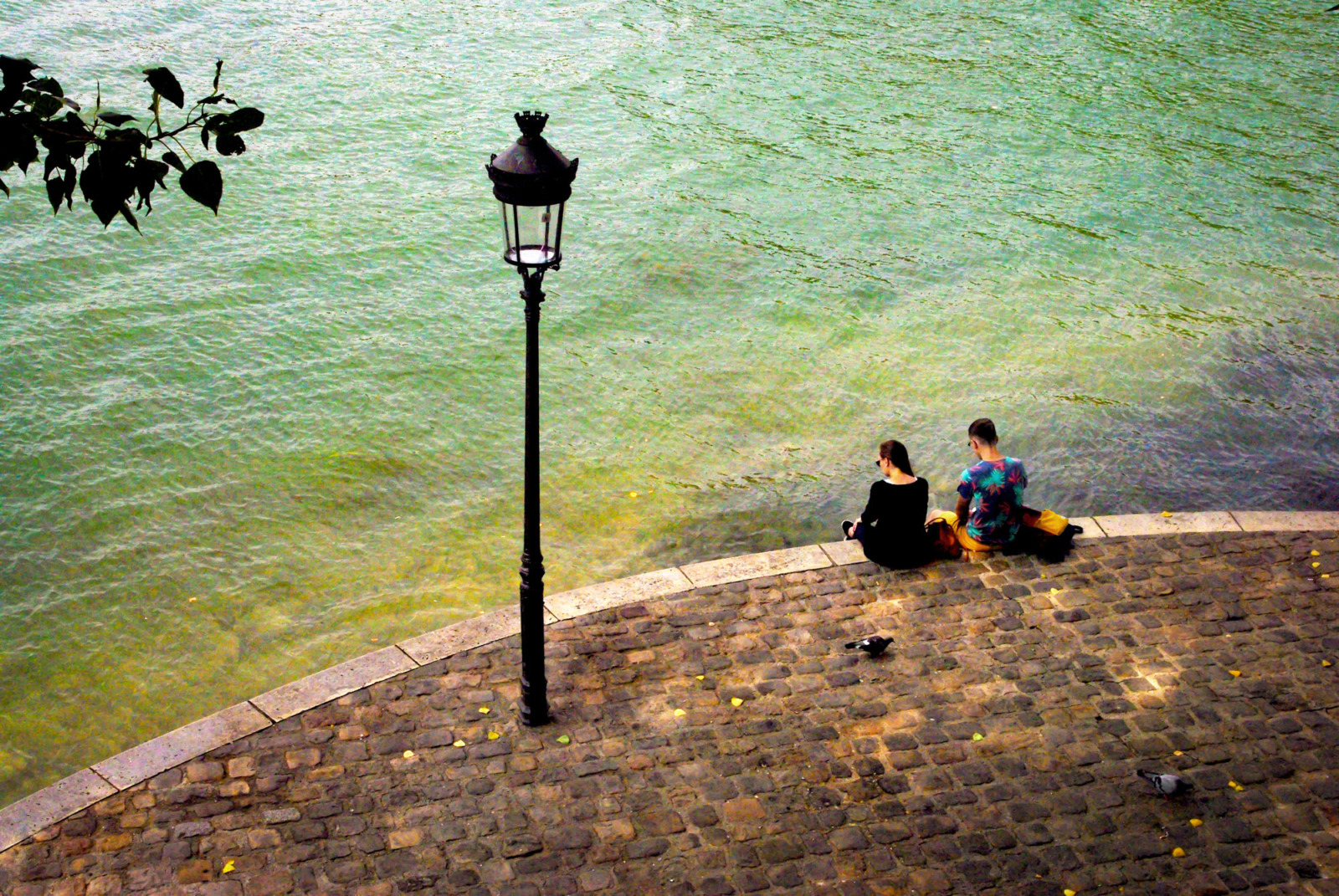
Here’s a little selection of inspiring quotes found here and there…
Victor Hugo, The Hunchback of Notre-Dame
“Admirable, however, as the Paris of the present-day appears to you, build up and put together again in imagination the Paris of the fifteenth century;
look at the light through that surprising host of steeples, towers, and belfries;
pour forth amid the immense city, break against the points of its islands, compress within the arches of the bridges, the current of the Seine, with its large patches of green and yellow, more changeable than a serpent’s skin;
define clearly the Gothic profile of this old Paris upon a horizon of azure, make its contour float in a wintry fog which clings to its innumerable chimneys;
drown it in the deep night, and observe the extraordinary play of darkness and light in this sombre labyrinth of buildings;
throw into it a ray of moonlight, which shall show its faint outline and cause the huge heads of the towers to stand forth from amid the mist;
or revert to that dark picture, touch up with shade the thousand acute angles of the spires and gables, and make them stand out, more jagged than a shark’s jaw, upon the copper-coloured sky of evening.
Now compare the two.”

Margaret Anderson
“Paris is the city in which one loves to live. Sometimes I think this is because it is the only city in the world where you can step out of a railway station—the Gare D’Orsay—and see, simultaneously, the chief enchantments: the Seine with its bridges and bookstalls, the Louvre, Notre Dame, the Tuileries Gardens, the Place de la Concorde, the beginning of the Champs Elysees—nearly everything except the Luxembourg Gardens and the Palais Royal. But what other city offers as much as you leave a train?”

Vicente Huidobro, The Cubist Poets in Paris: An Anthology
“Morning”
SUN
That awakens Paris
The highest poplar on the bank
On The Eiffel Tower
A tricolored cock
Sings to the flapping of his wings
and several feathers fall
As it resumes its course
The Seine looks between the bridges
For her old route
And the Obelisk
That has forgotten the Egyptian words
Has not blossomed this year
SUN”
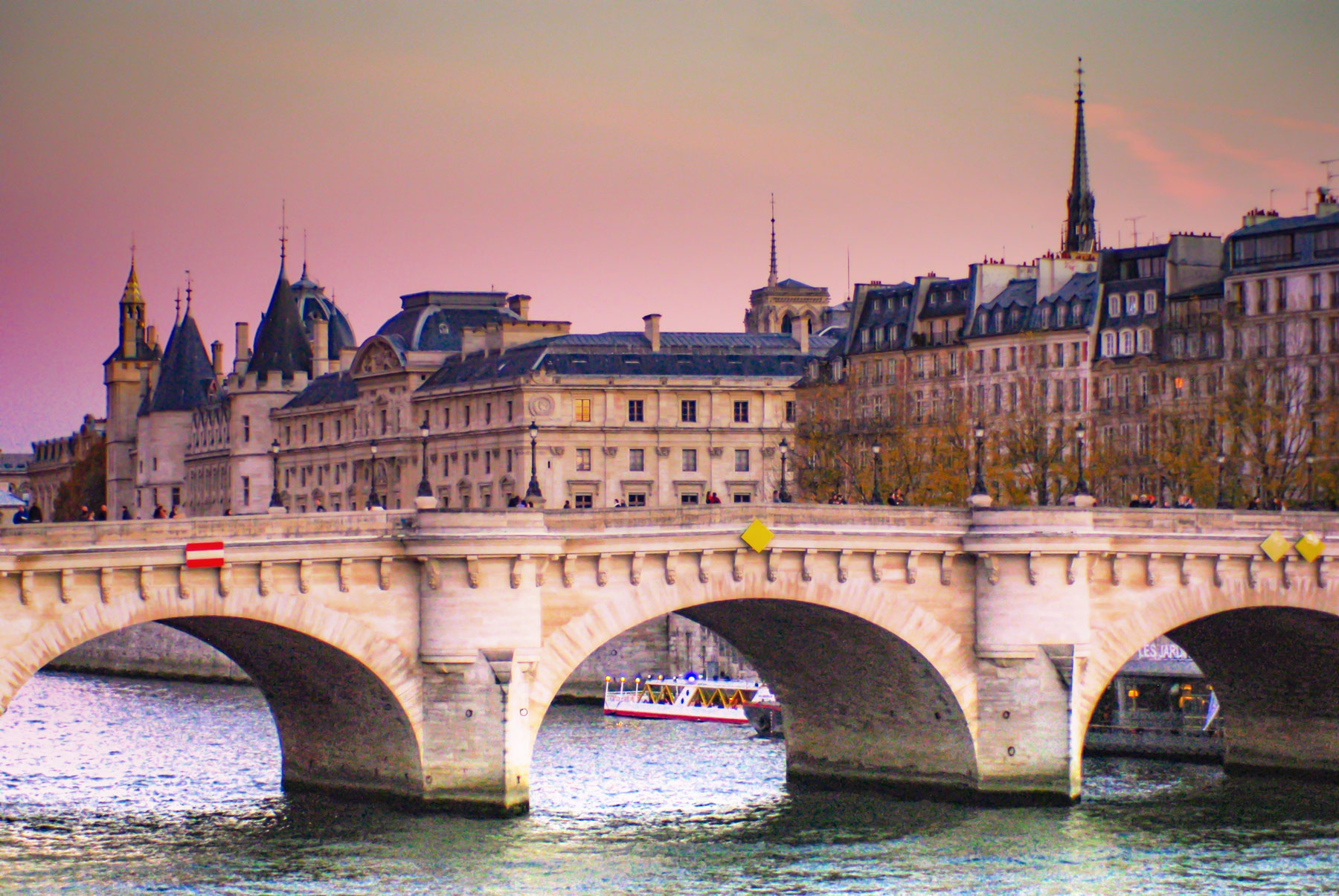
Boileau
“La Seine a des Bourbons, le Tibre a des Césars.”
(“The Seine has Bourbons, the Tiber has Caesars.”)
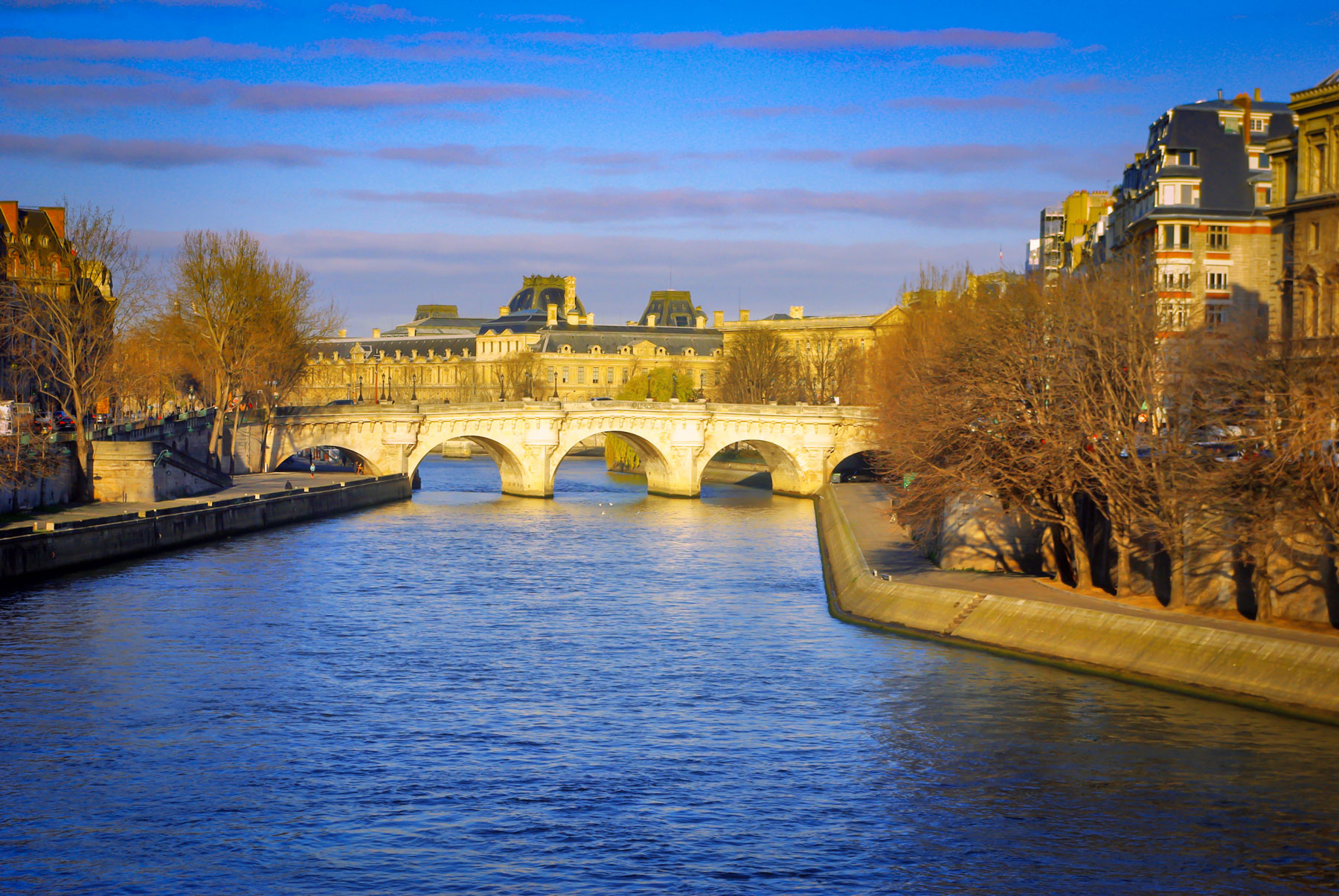
François Mitterrand
“Le destin de la Seine est-il d’arroser Paris ou bien d’aller à l’Océan?”
(“Is it the Seine’s destiny to water Paris or to flow into the ocean?)
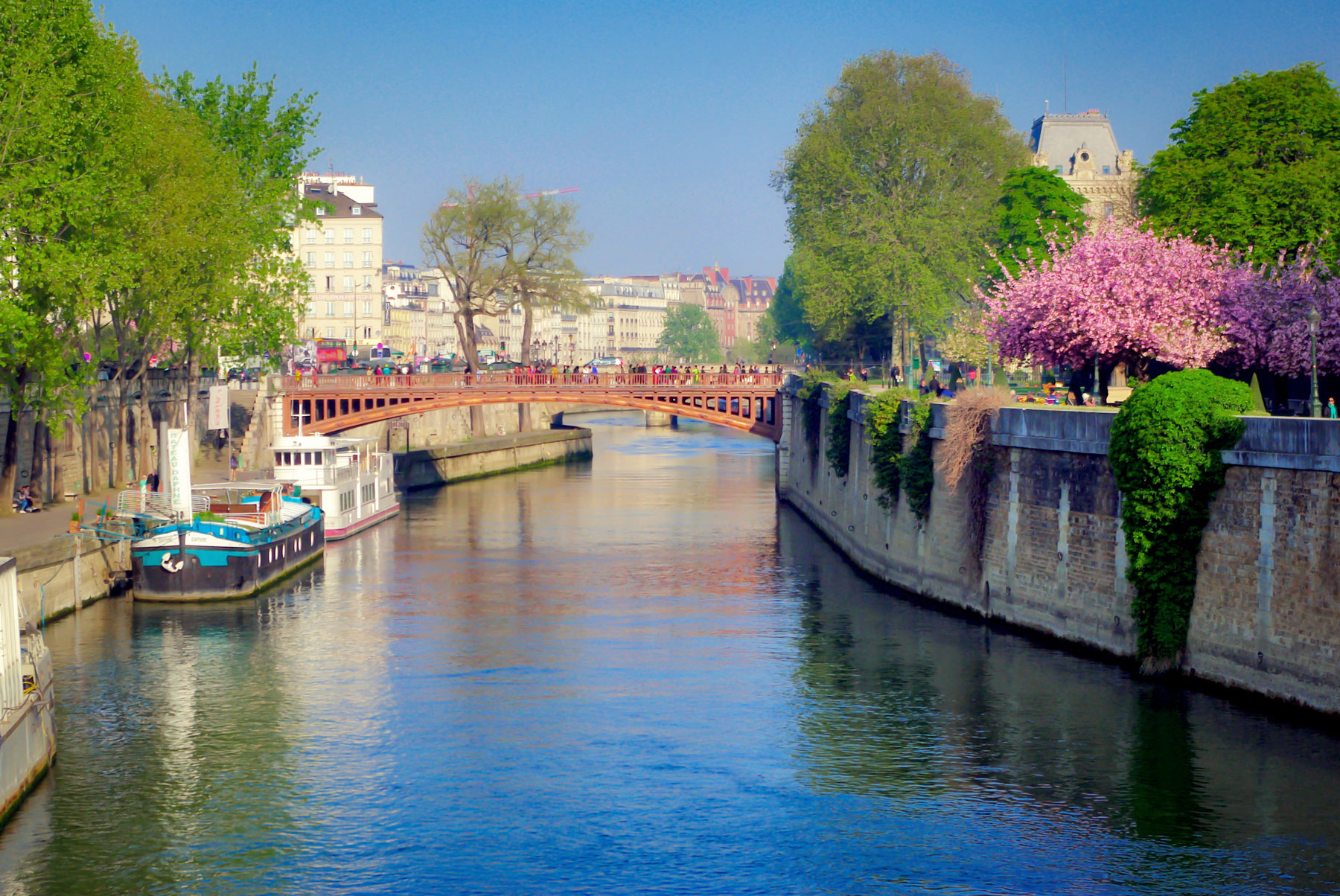
Victor Hugo, Notre-Dame de Paris
Paris est né, comme on sait, dans cette vieille île de la Cité qui a la forme d’un berceau. La grève de cette île fut sa première enceinte, la Seine son premier fossé.
(Paris was born, as we know, on the old Île de la Cité, which is shaped like a cradle. The strike of this island was its first wall, the Seine its first moat.)

Anatole France, Le crime de Sylvestre Bonnard
“Les bouquinistes déposent leurs boîtes sur le parapet. Ces braves marchands d’esprit, qui vivent sans cesse dehors, la blouse au vent, sont si bien travaillés par l’air, les pluies, les gelées, les neiges, les brouillards et le grand soleil, qu’ils finissent par ressembler aux vieilles statues des cathédrales. Ils sont tous mes amis et je ne passe guère devant leurs boîtes sans en tirer quelque bouquin qui me manquait jusque là, sans que j’en eusse le moindre soupçon.”
(“The booksellers place their boxes on the parapet. These brave merchants of the mind, who constantly live outdoors with the wind in their smocks, are so weathered by the air, the rain, the frost, the snow, the fog, and the blazing sun that they end up resembling the old statues of cathedrals. They are all my friends, and I rarely pass by their boxes without picking out some book that I had been missing until then, without the slightest inkling of it.”)
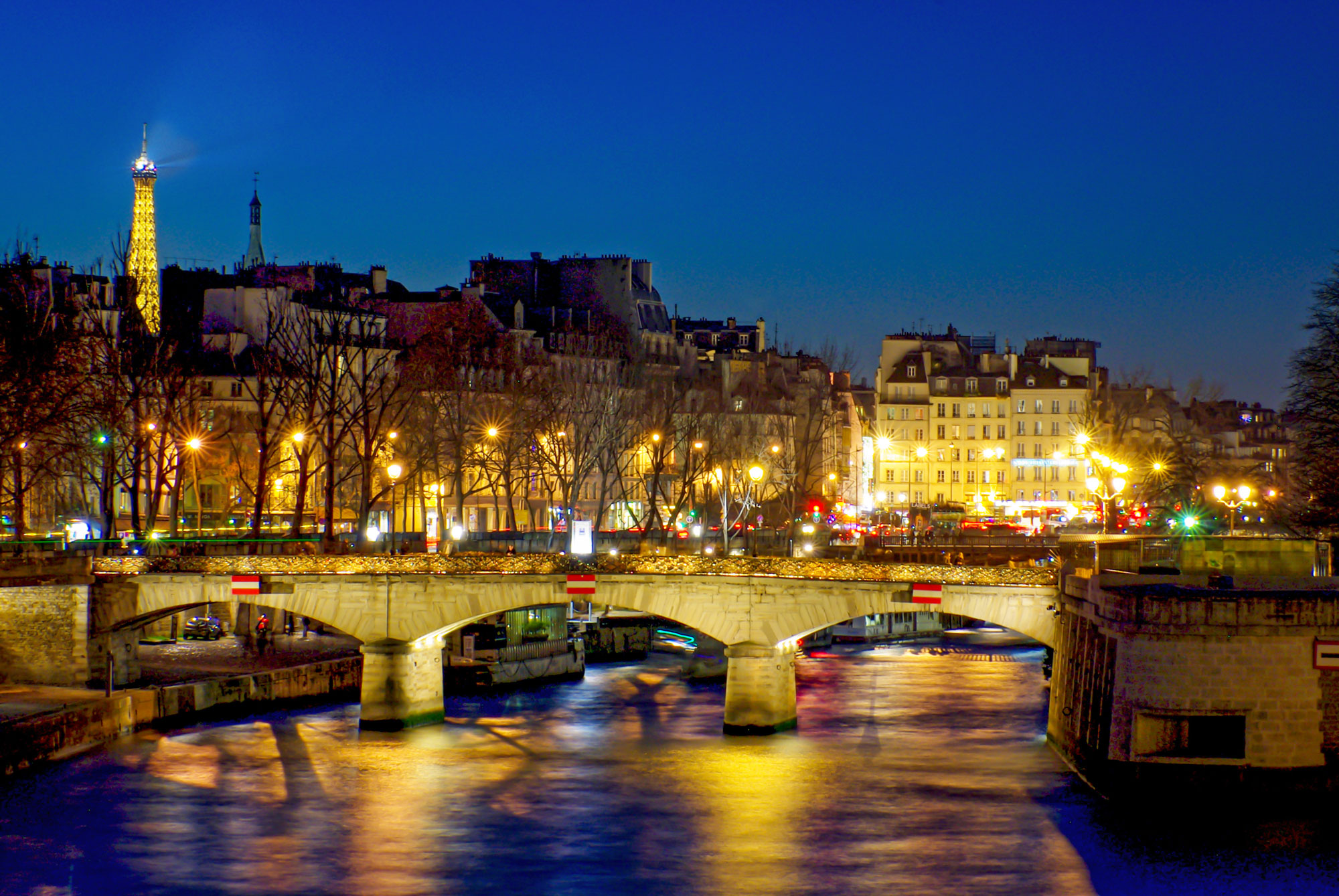
Sous le ciel de Paris
“Sous le ciel de Paris
Coule un fleuve joyeux
Hum Hum
Il endort dans la nuit
Les clochards et les gueux
Sous le ciel de Paris
Les oiseaux du Bon Dieu
Hum Hum
Viennent du monde entier
Pour bavarder entre eux”
(“Under the skies of Paris
Flows a joyous river
Hum Hum
It lulls to sleep
The tramps and the beggars
Under the sky of Paris
The birds of God
Hum Hum
Come from all over the world
To chat with each other”.)
From the song: Sous le Ciel de Paris – Lyrics: Jean Dréjac – music: Hubert Giraud – sung by Jean Bretonnière in 1950 and Édith Piaf in 1954.
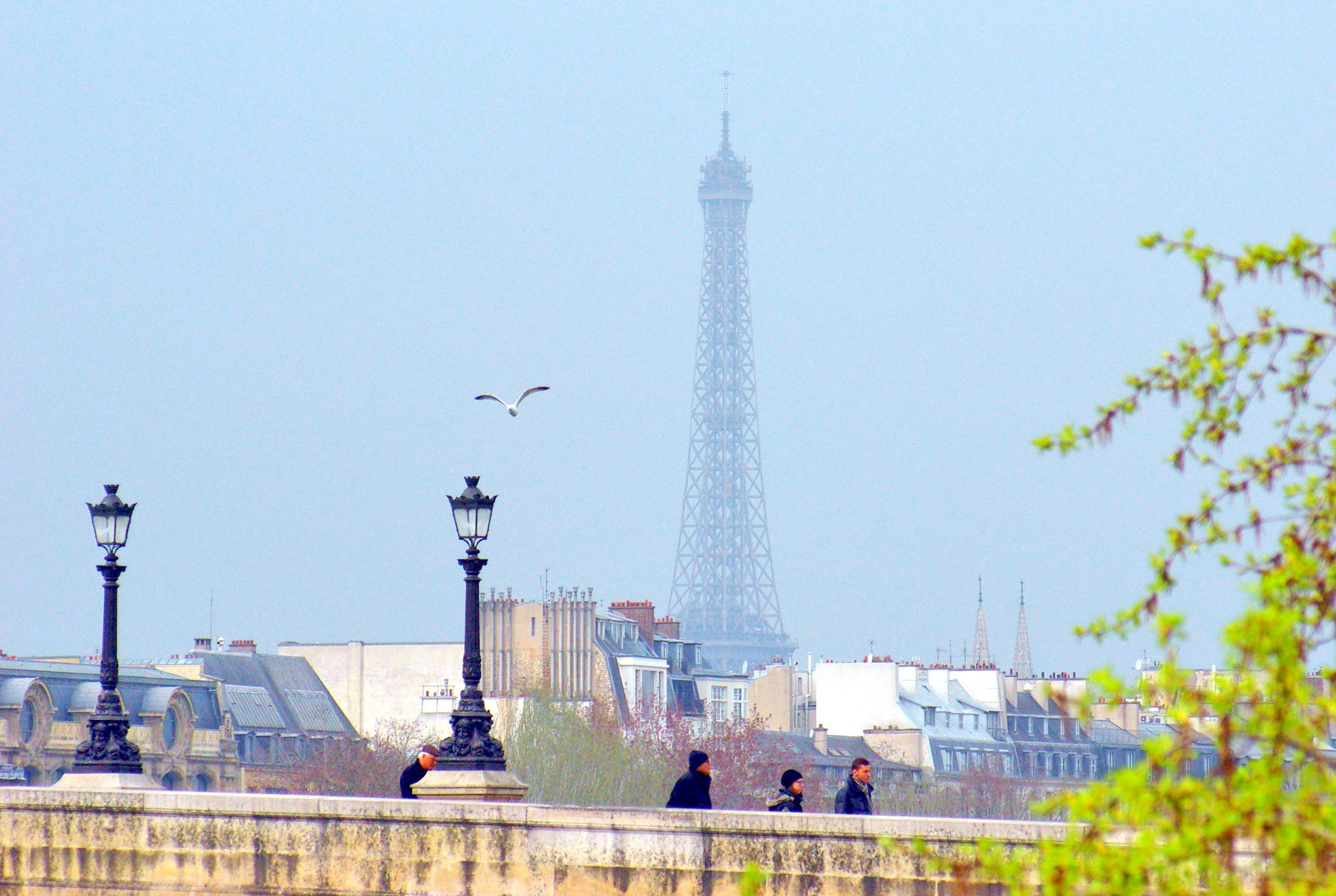
Quais de la Seine: English-French Vocabulary
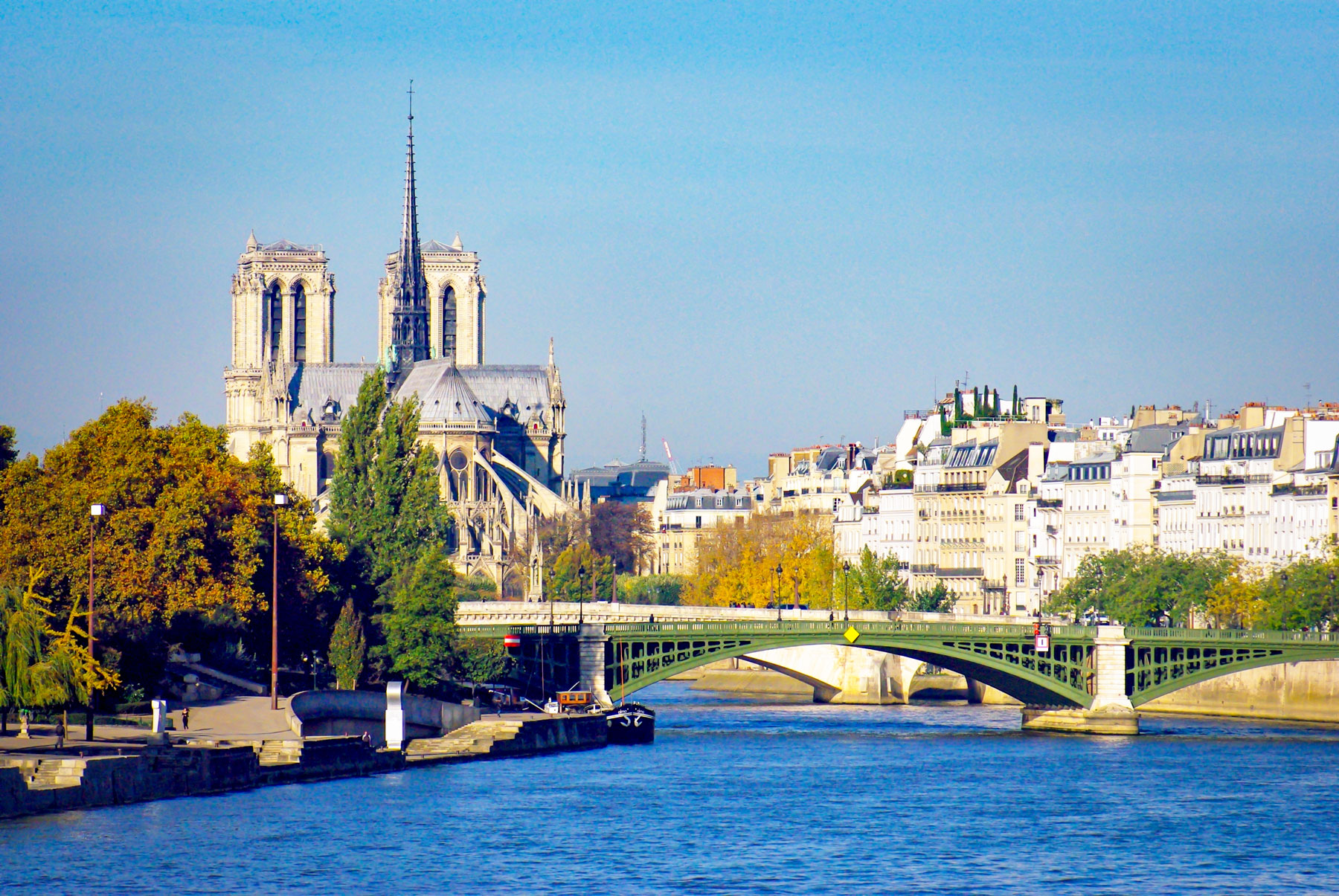
(f) for féminin, (m) for masculin and (v) for verbs
- bank = quai (m)
- banks of the River Seine = quais de la Seine (m,p)
- bridge = pont (m)
- island = île (f)
- Left Bank = Rive Gauche (f)
- Lutetia = Lutèce
- monument = monument (m)
- Right Bank = Rive Droite (f)
- river = rivière (f)
- World Heritage Site = Site du Patrimoine Mondial (m)
More photos of the Quais de la Seine
Here’s a selection of photos I took during my visits to Paris—photos taken in all seasons, from early morning to nighttime!
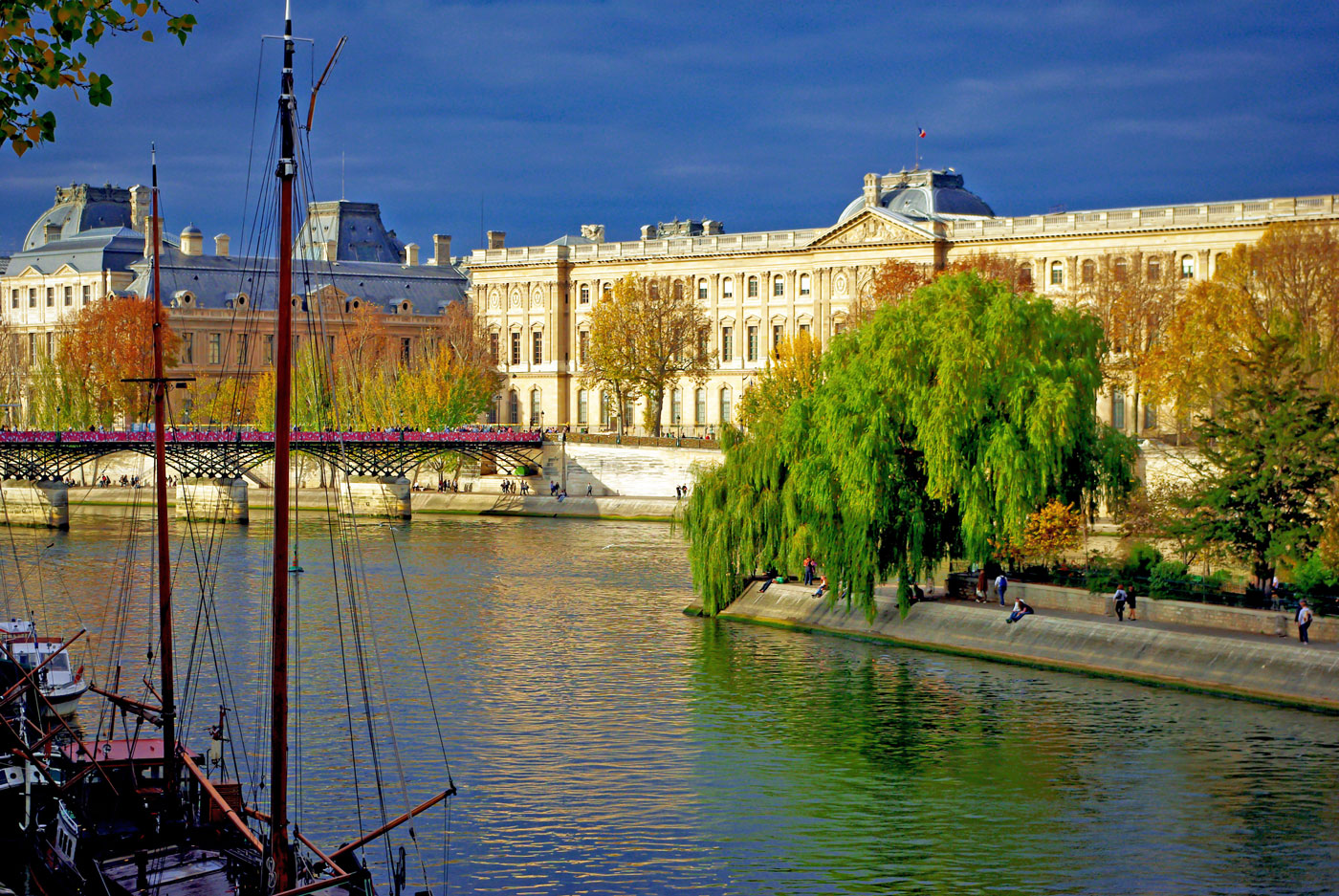
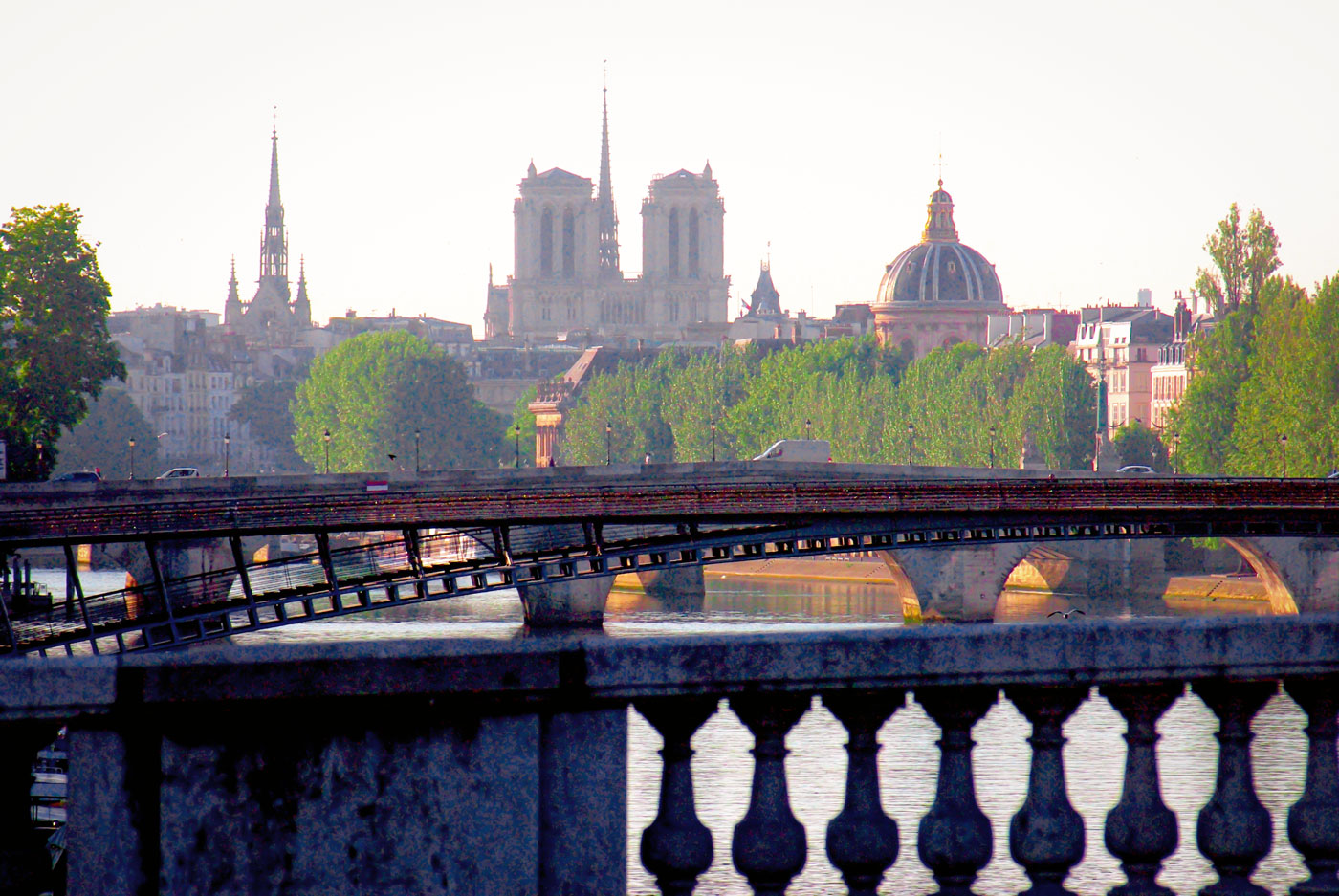
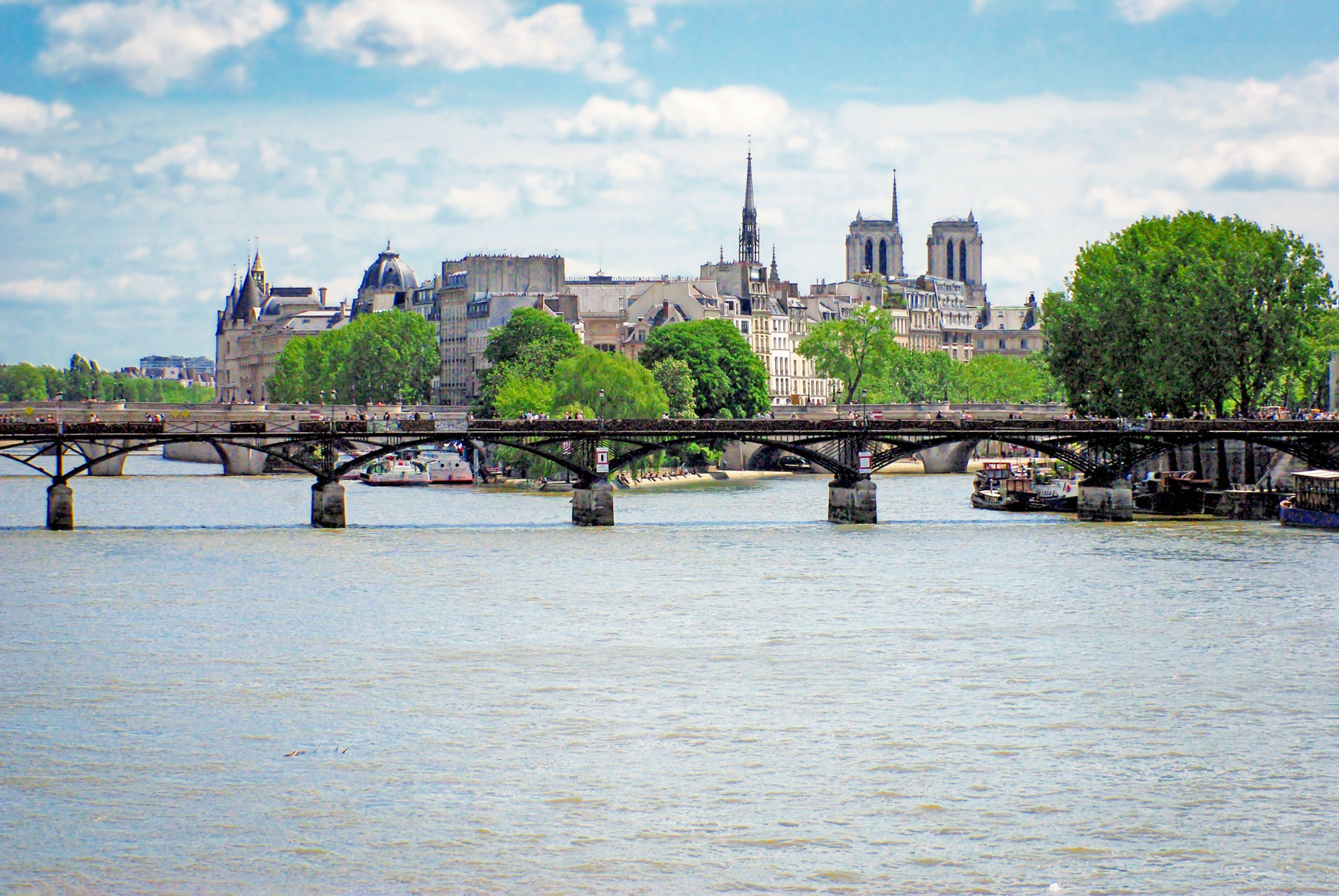
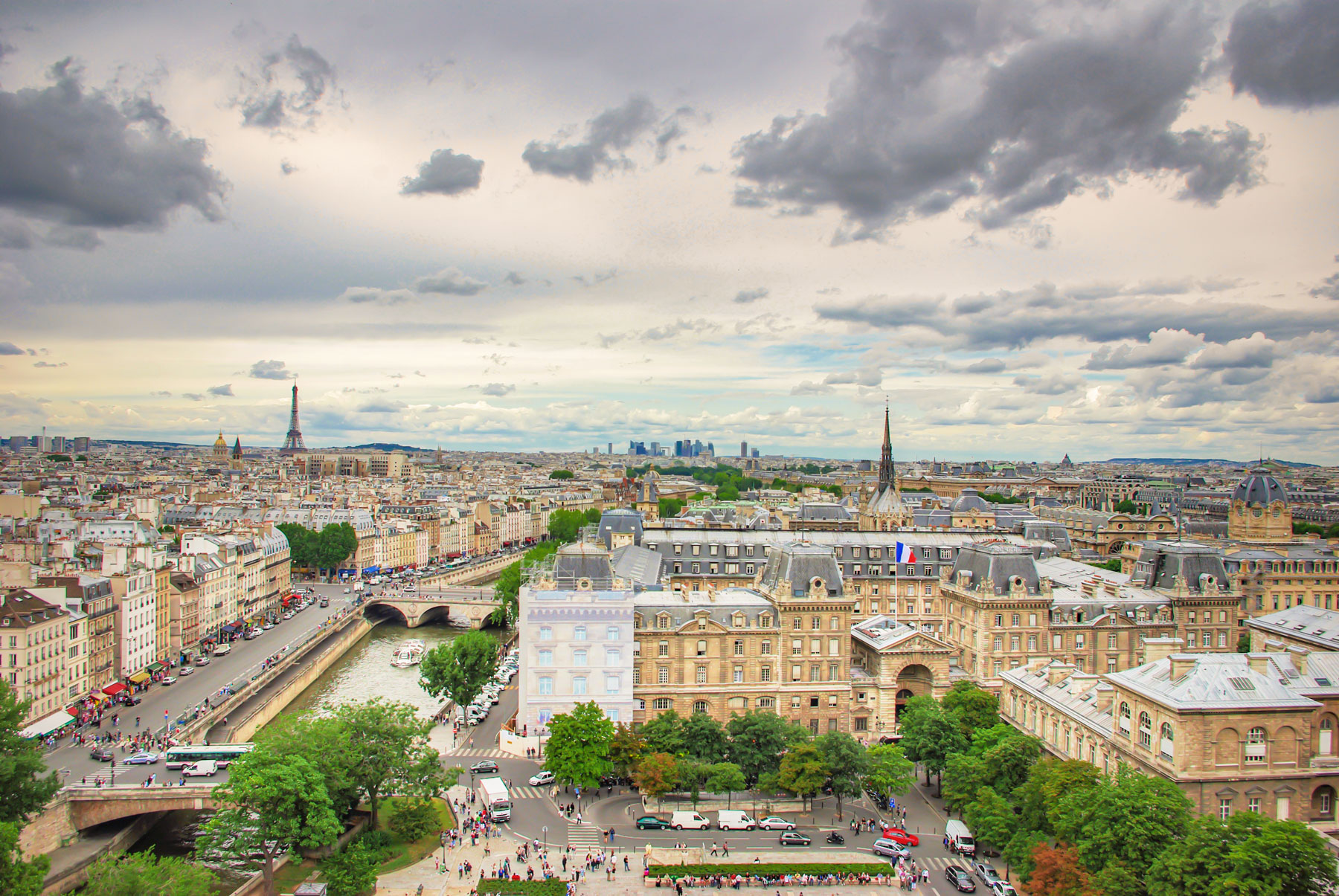
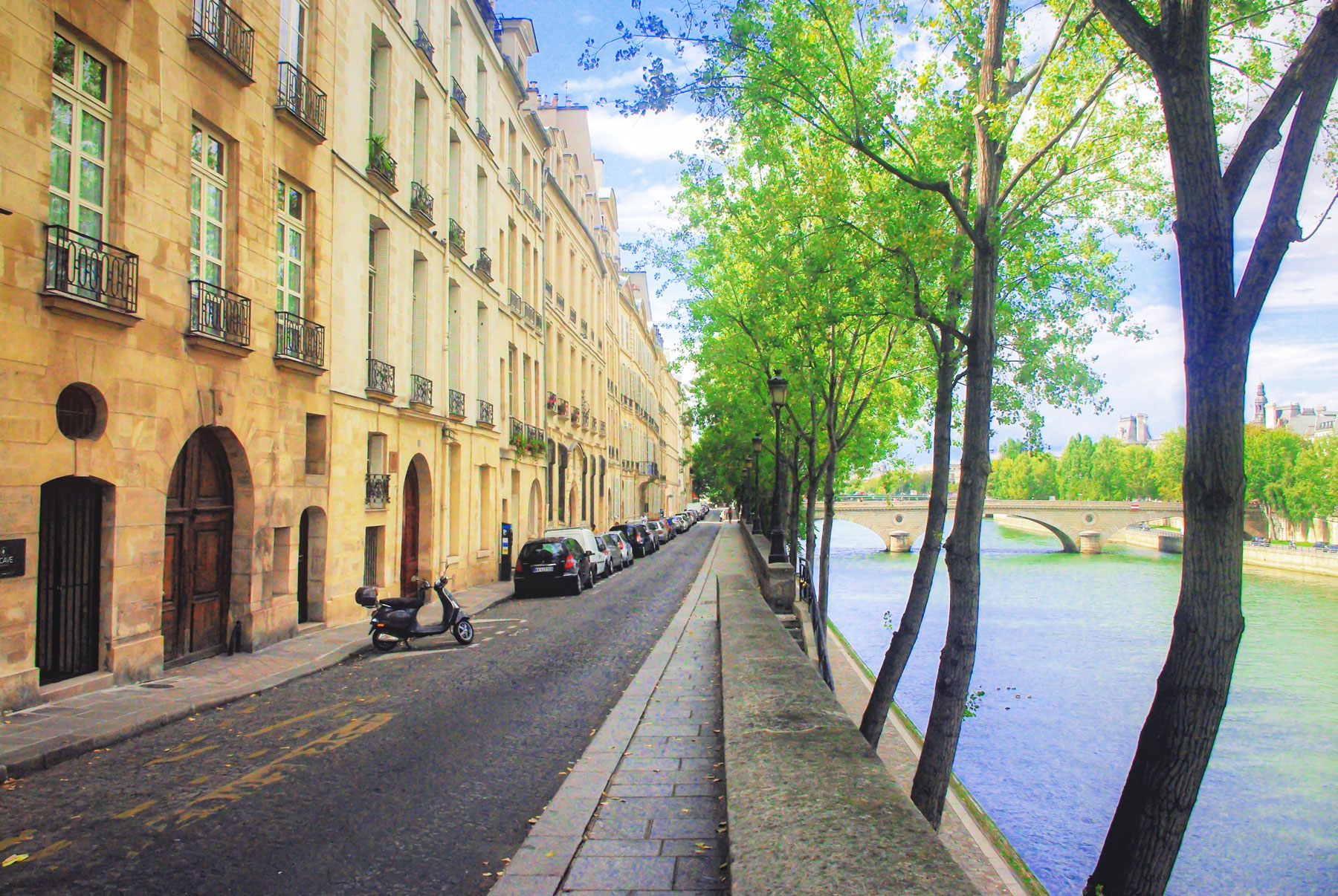
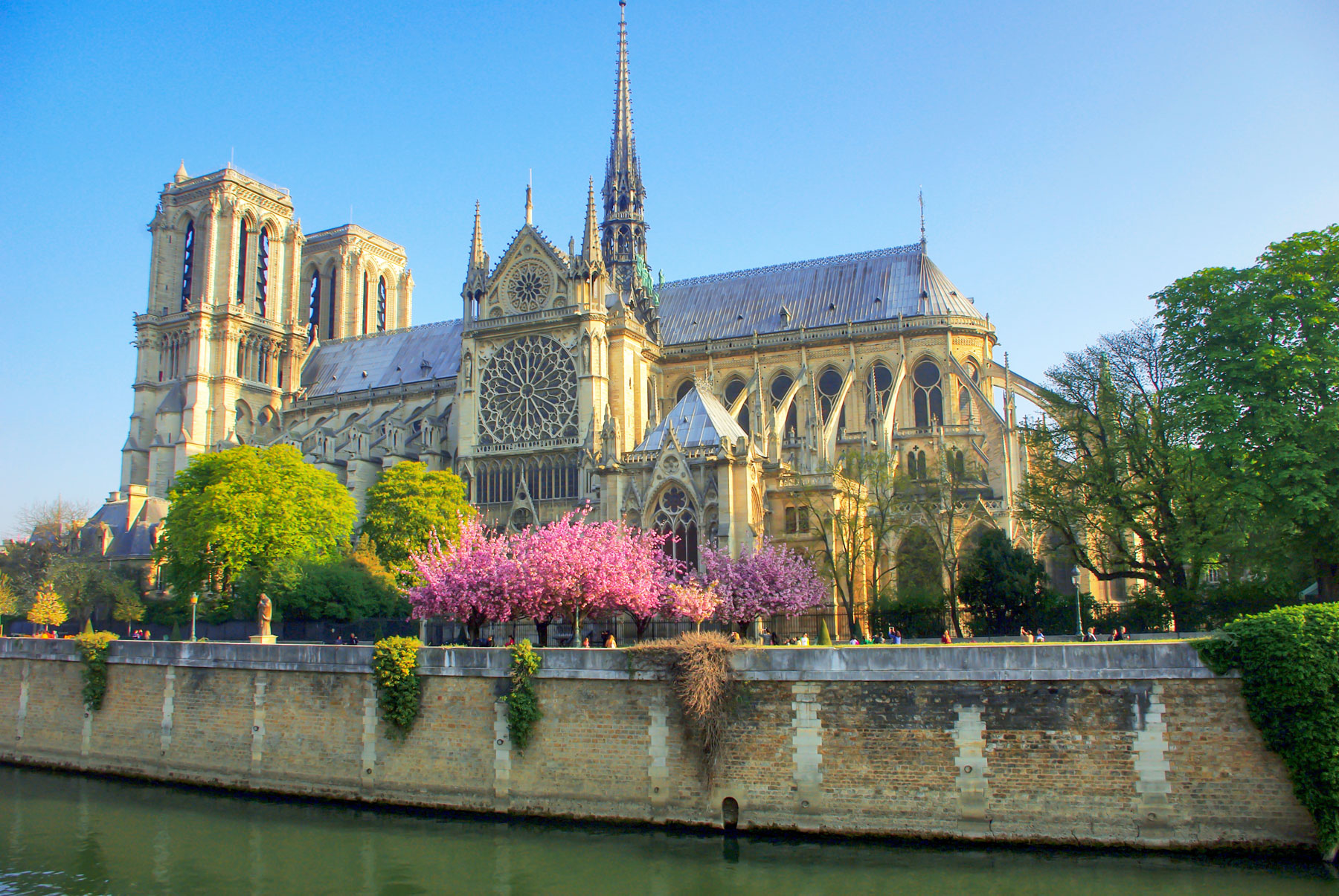

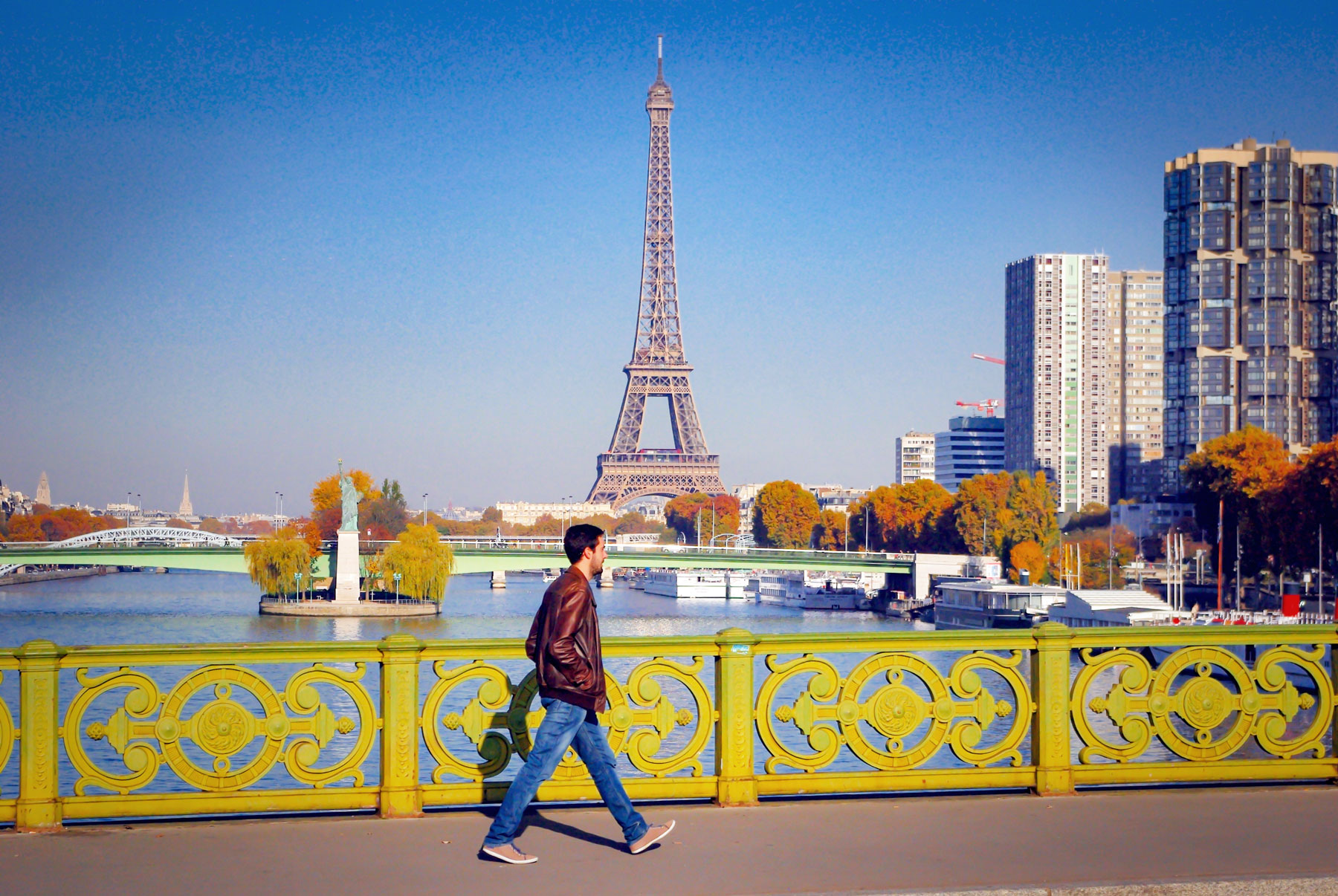
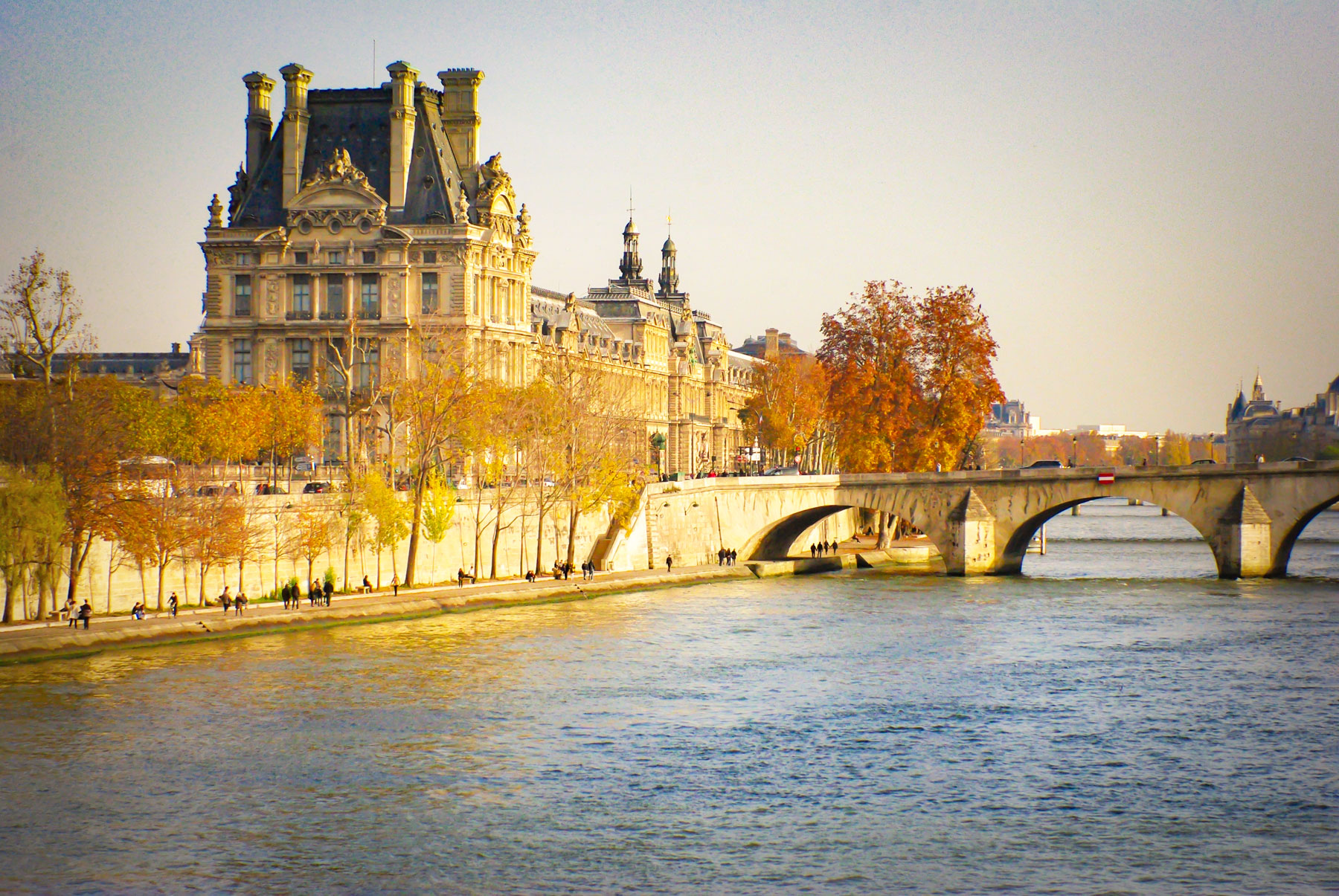
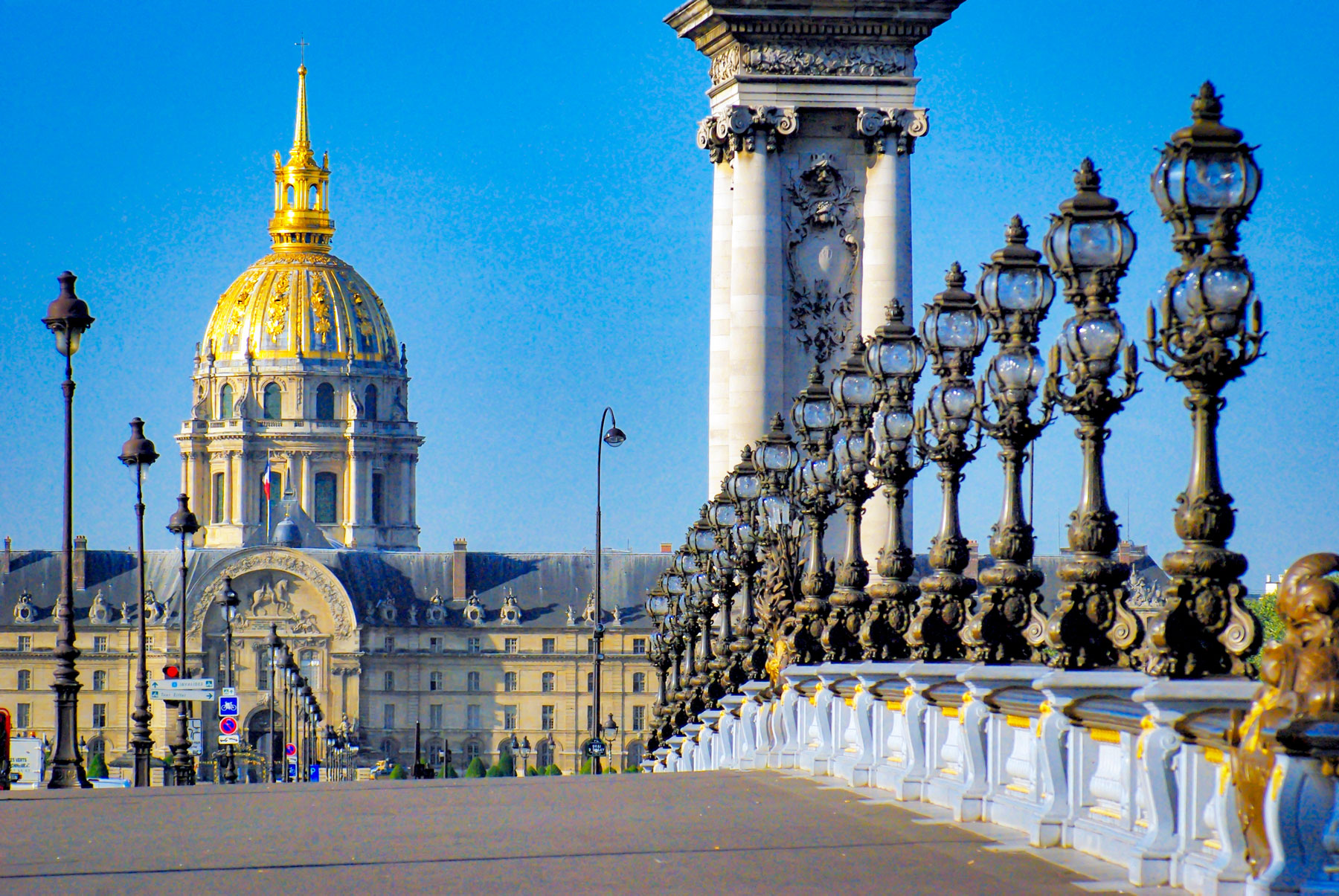

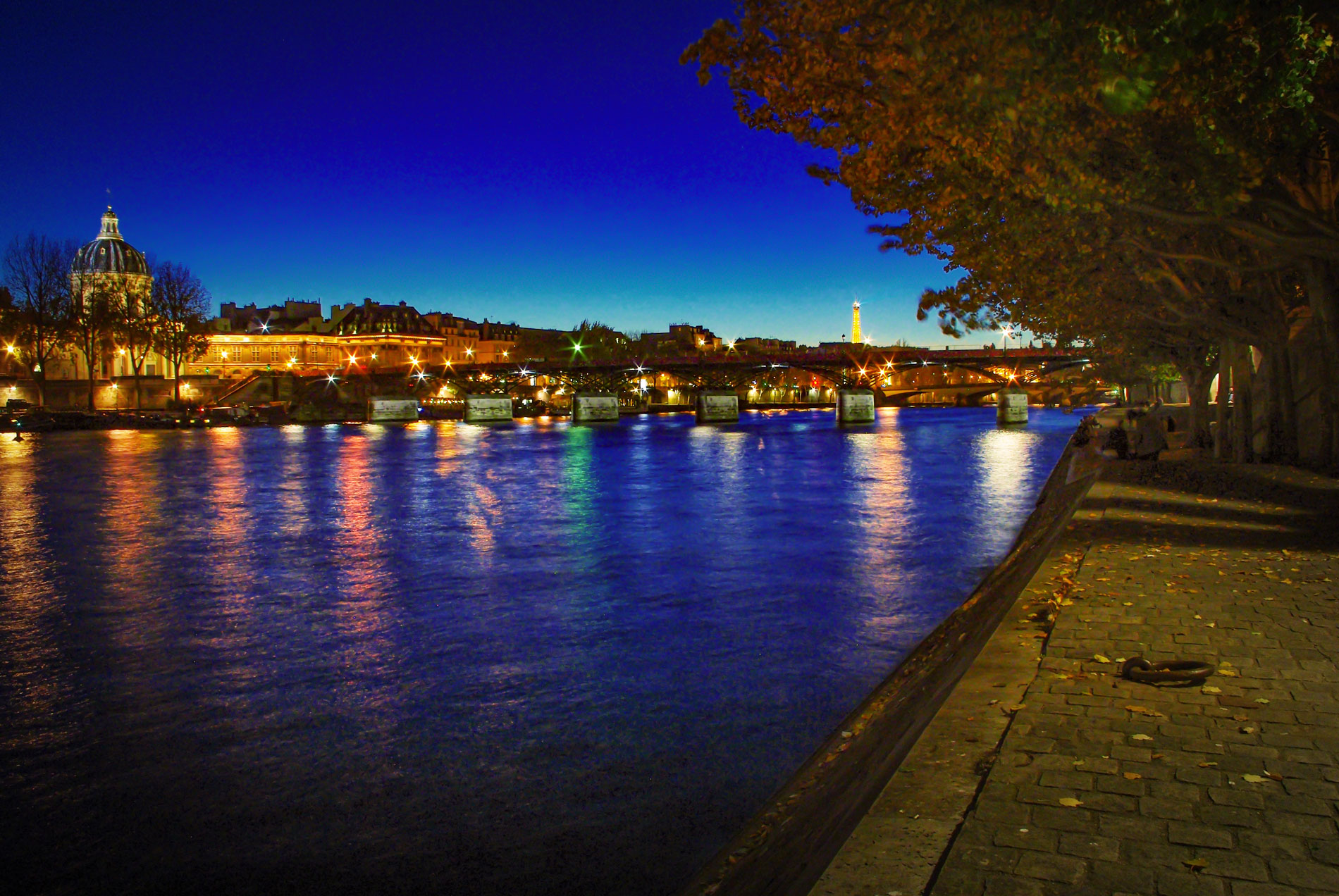

Pin it for later…
Liked what you read? Share this post on Facebook or Twitter… and pin it on Pinterest:
